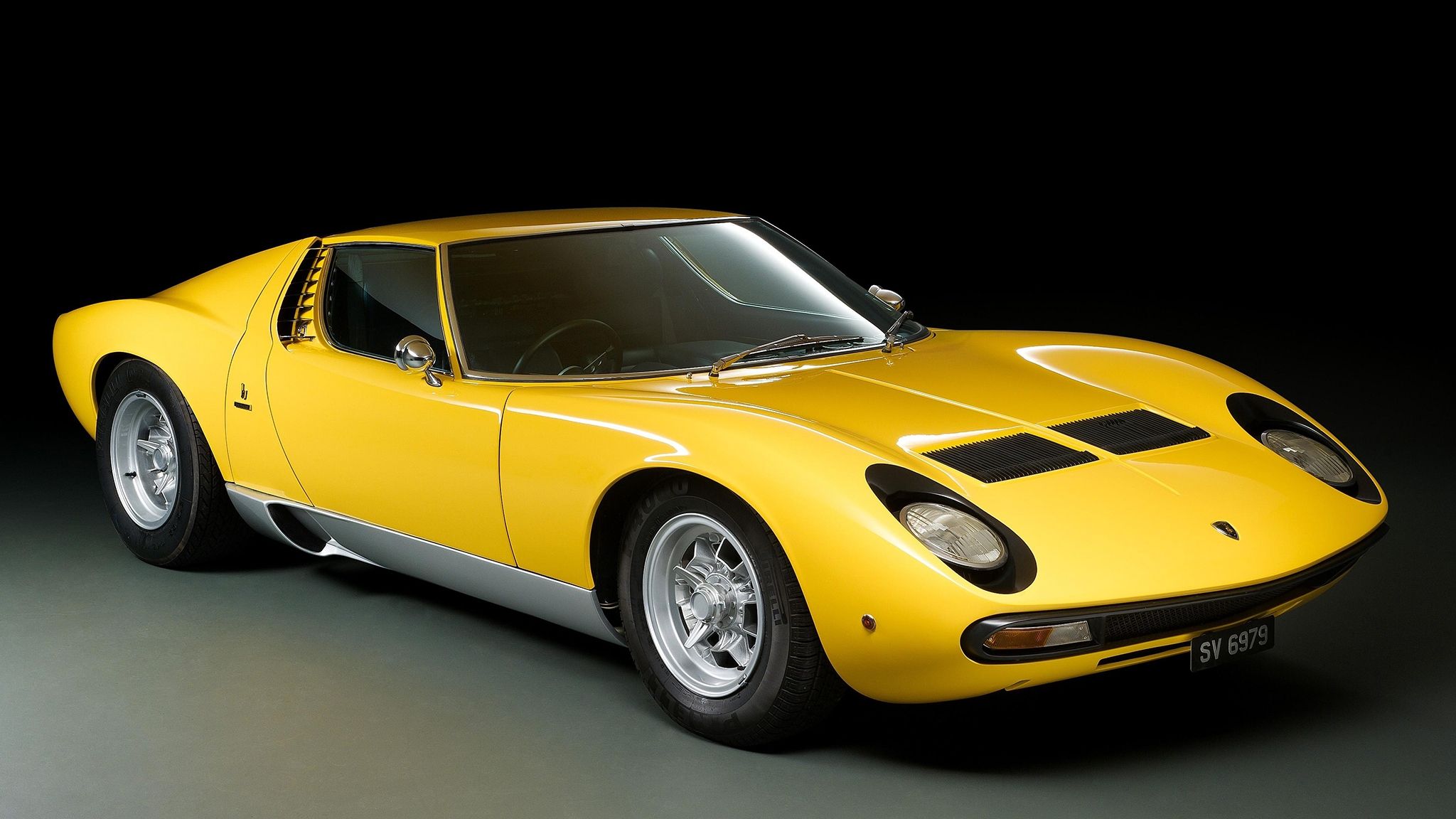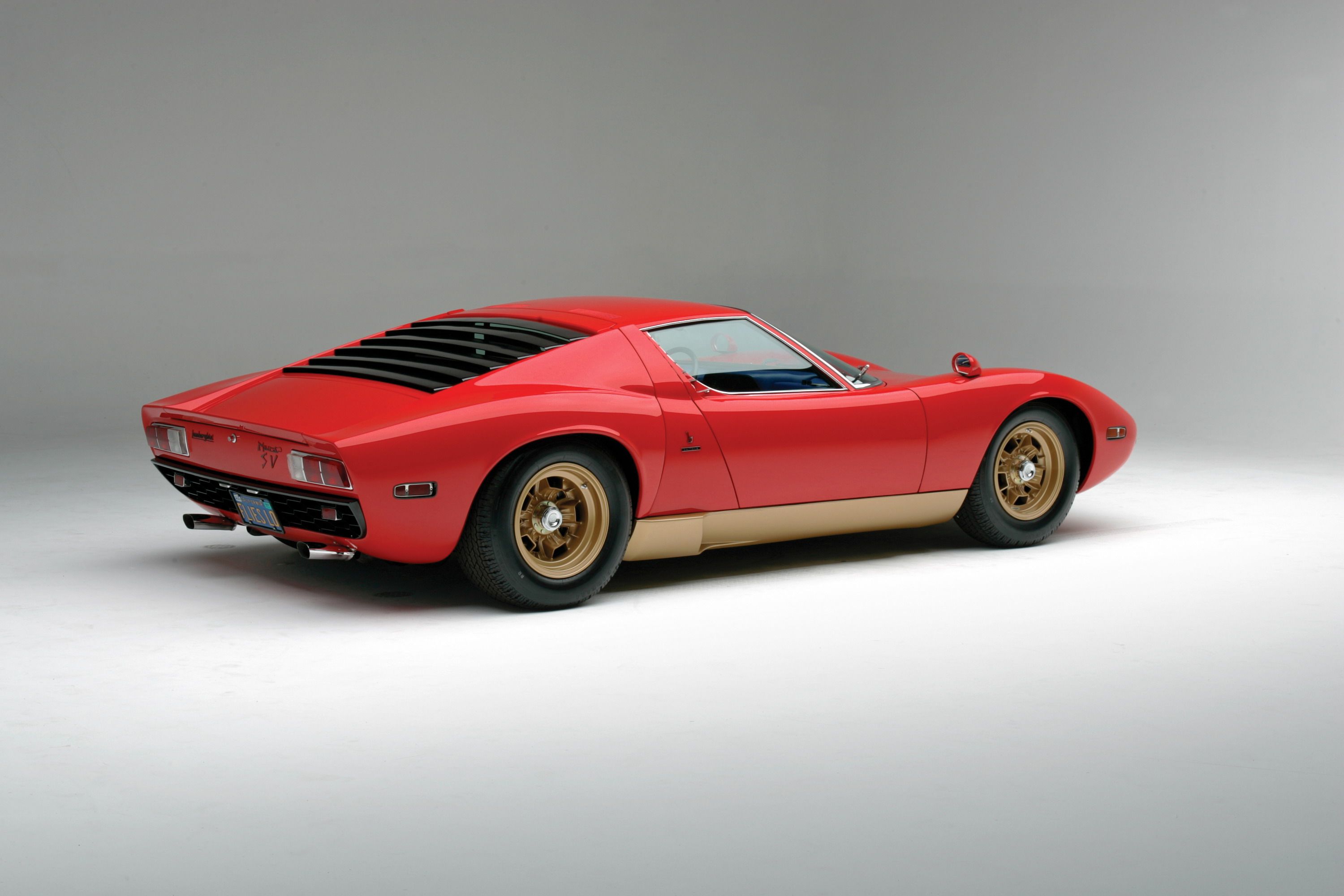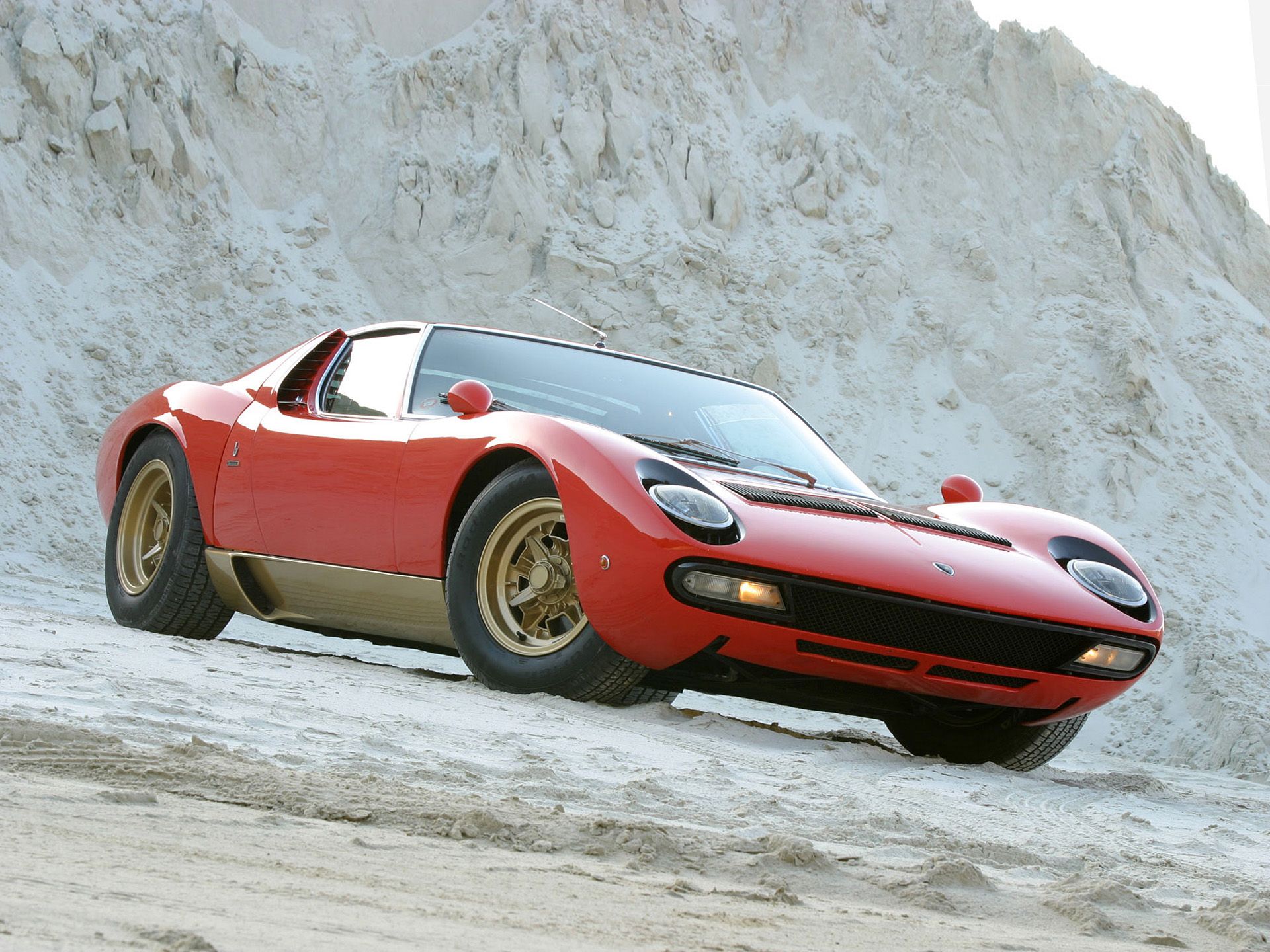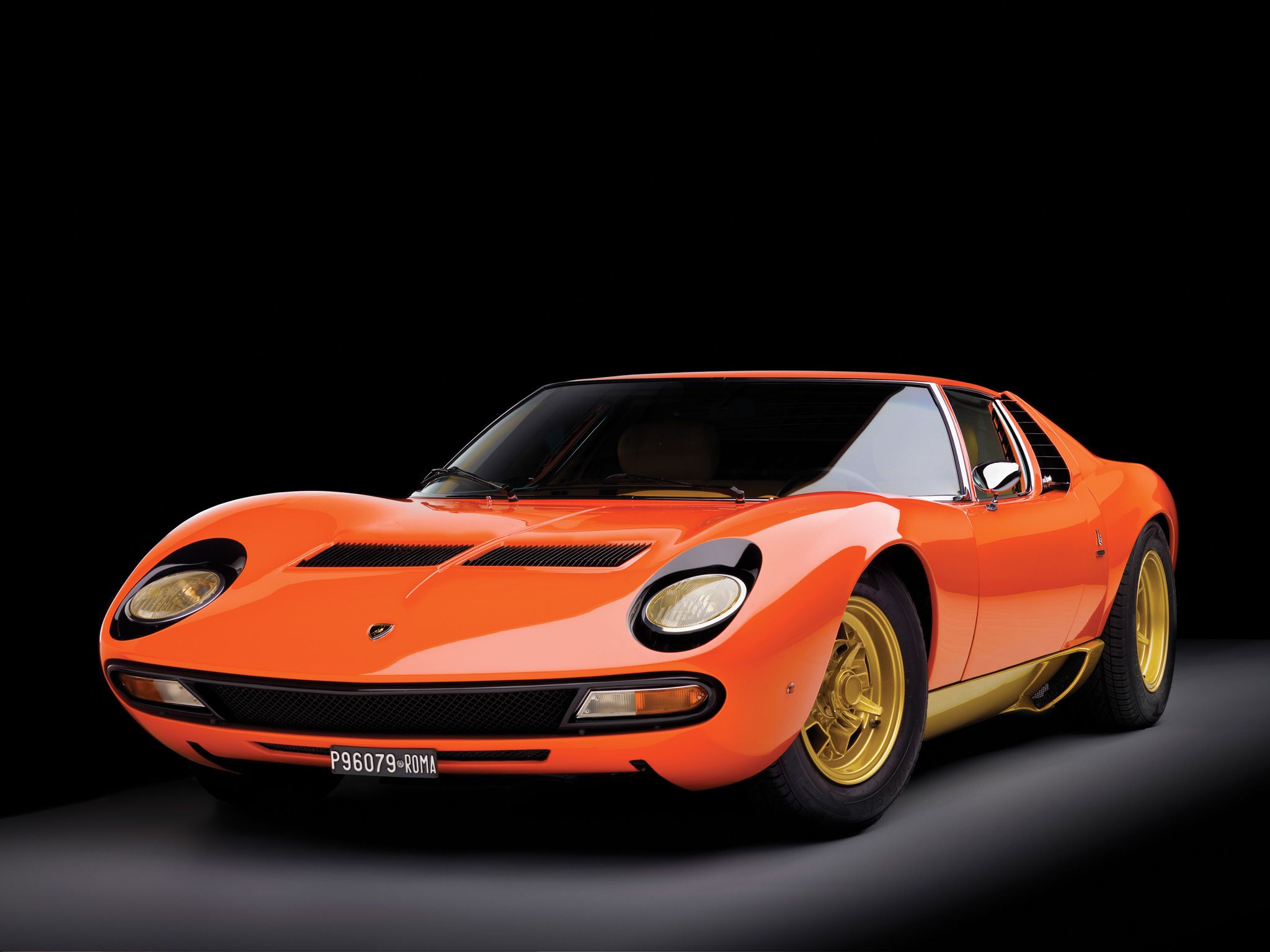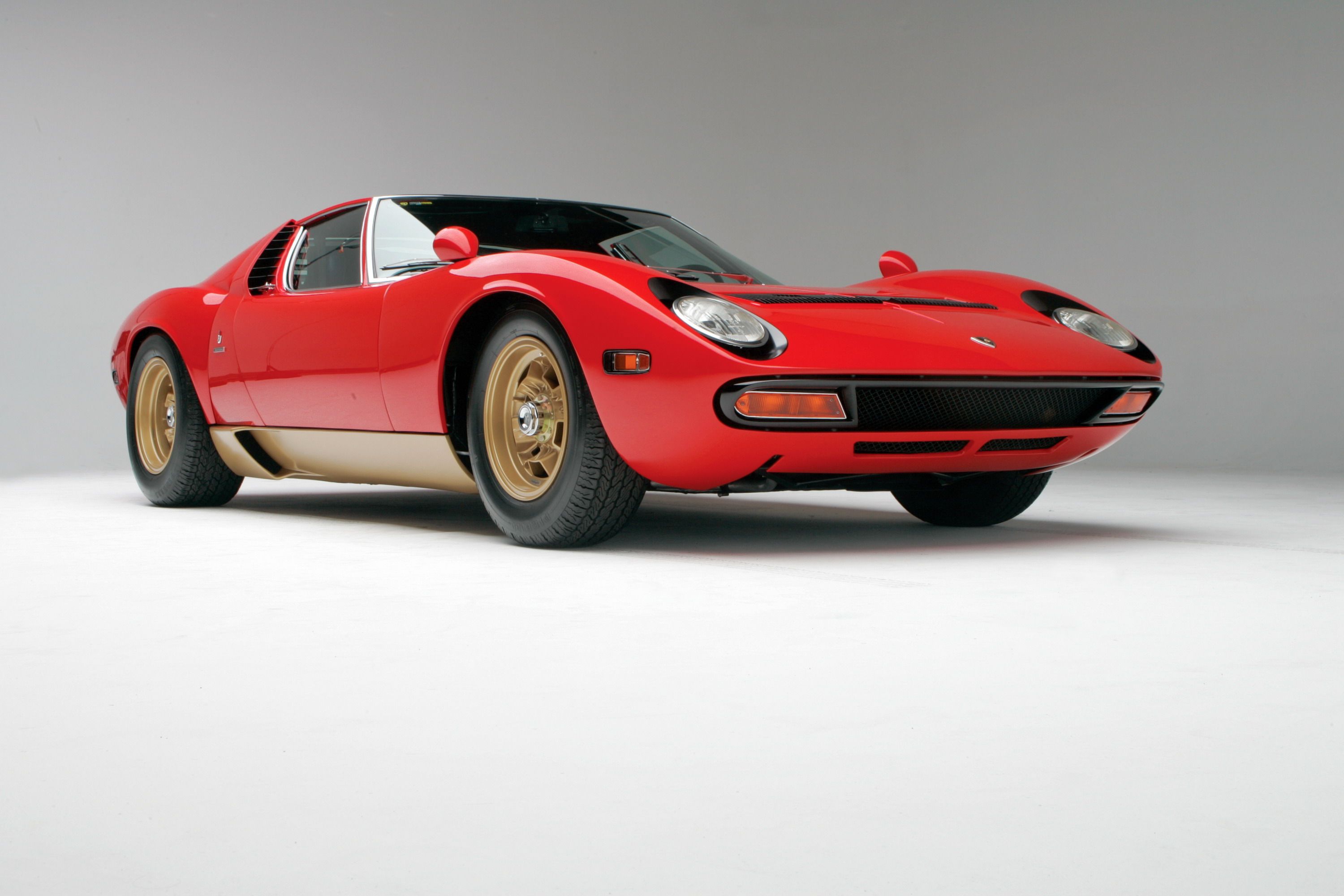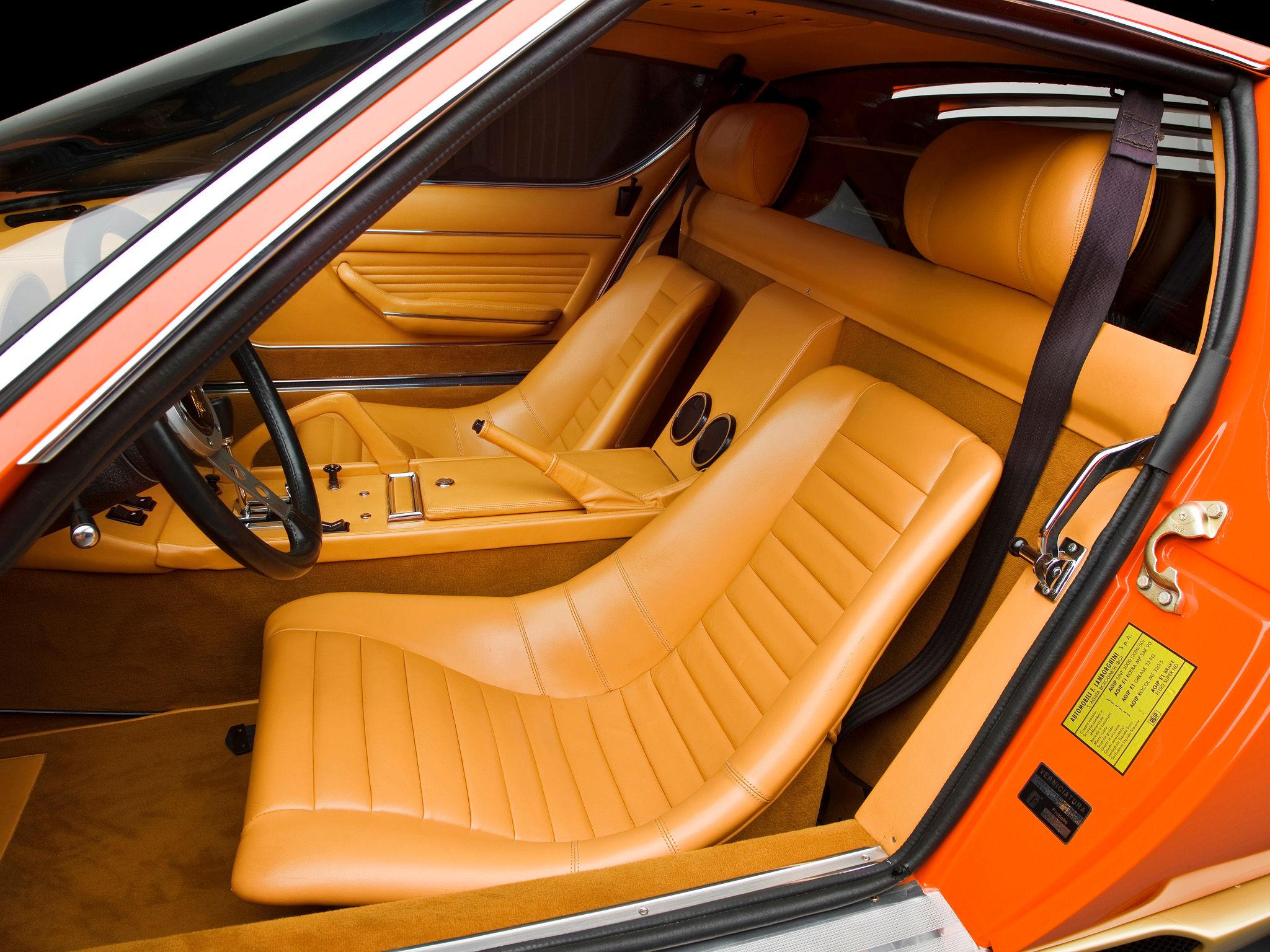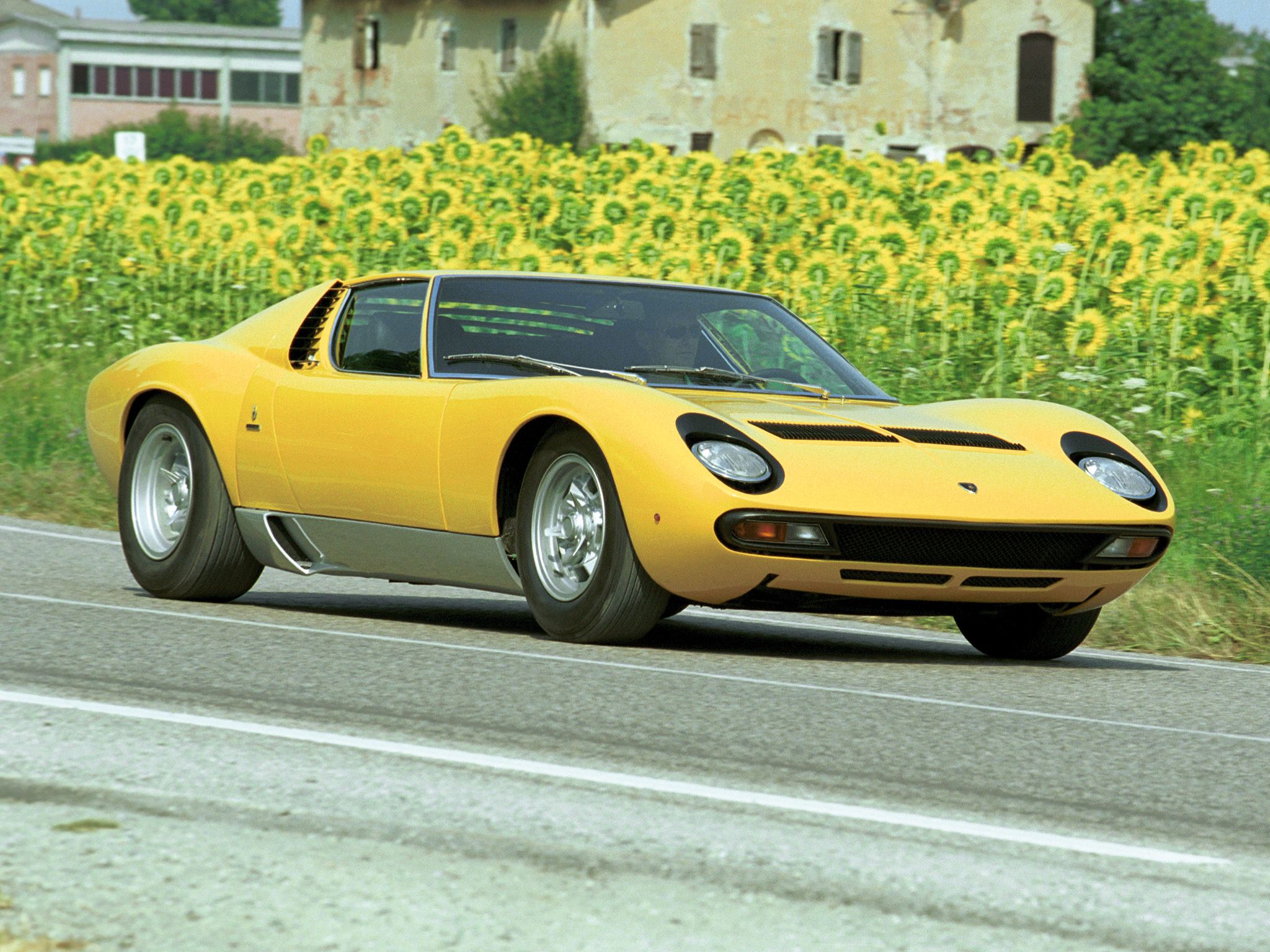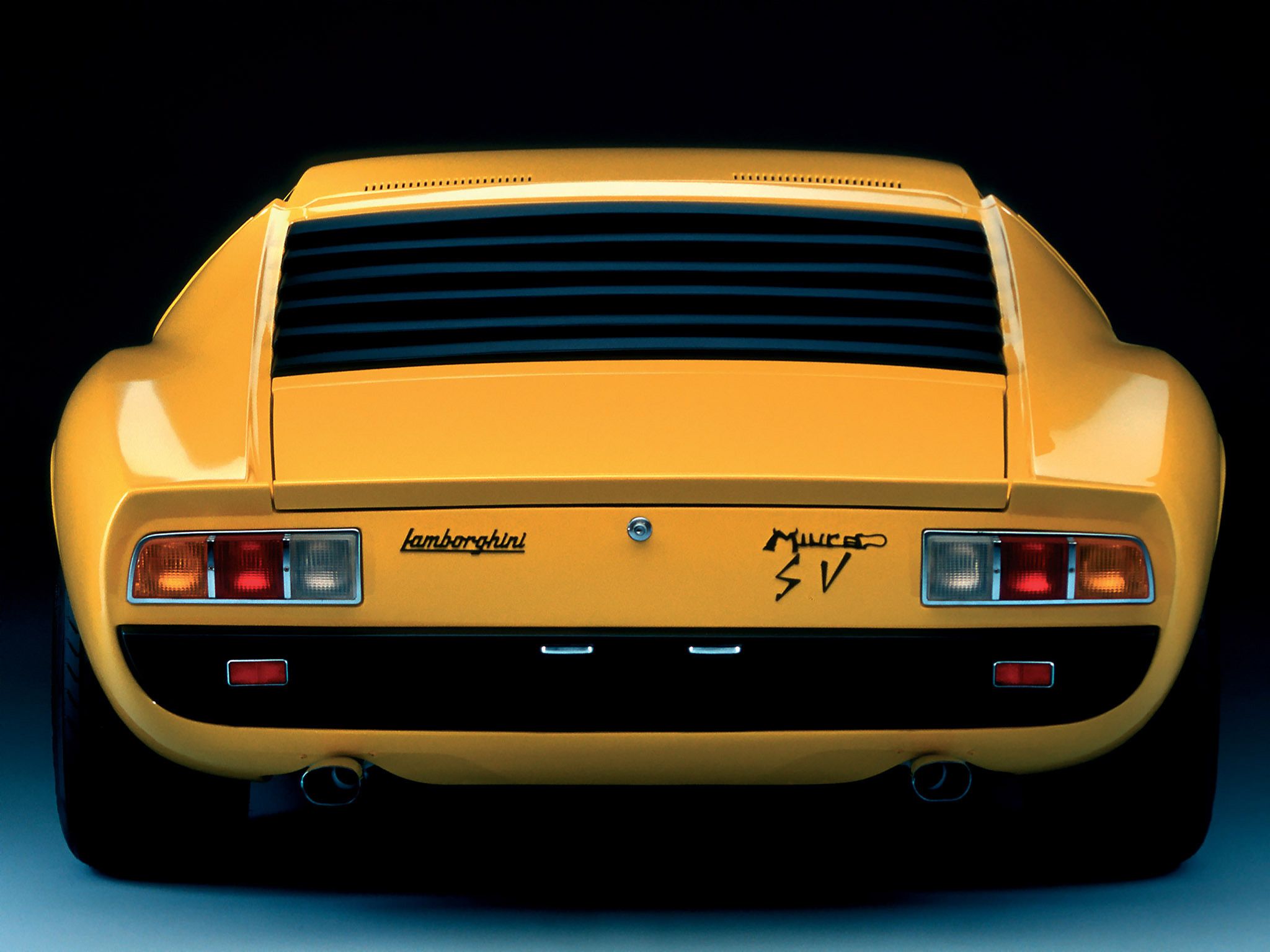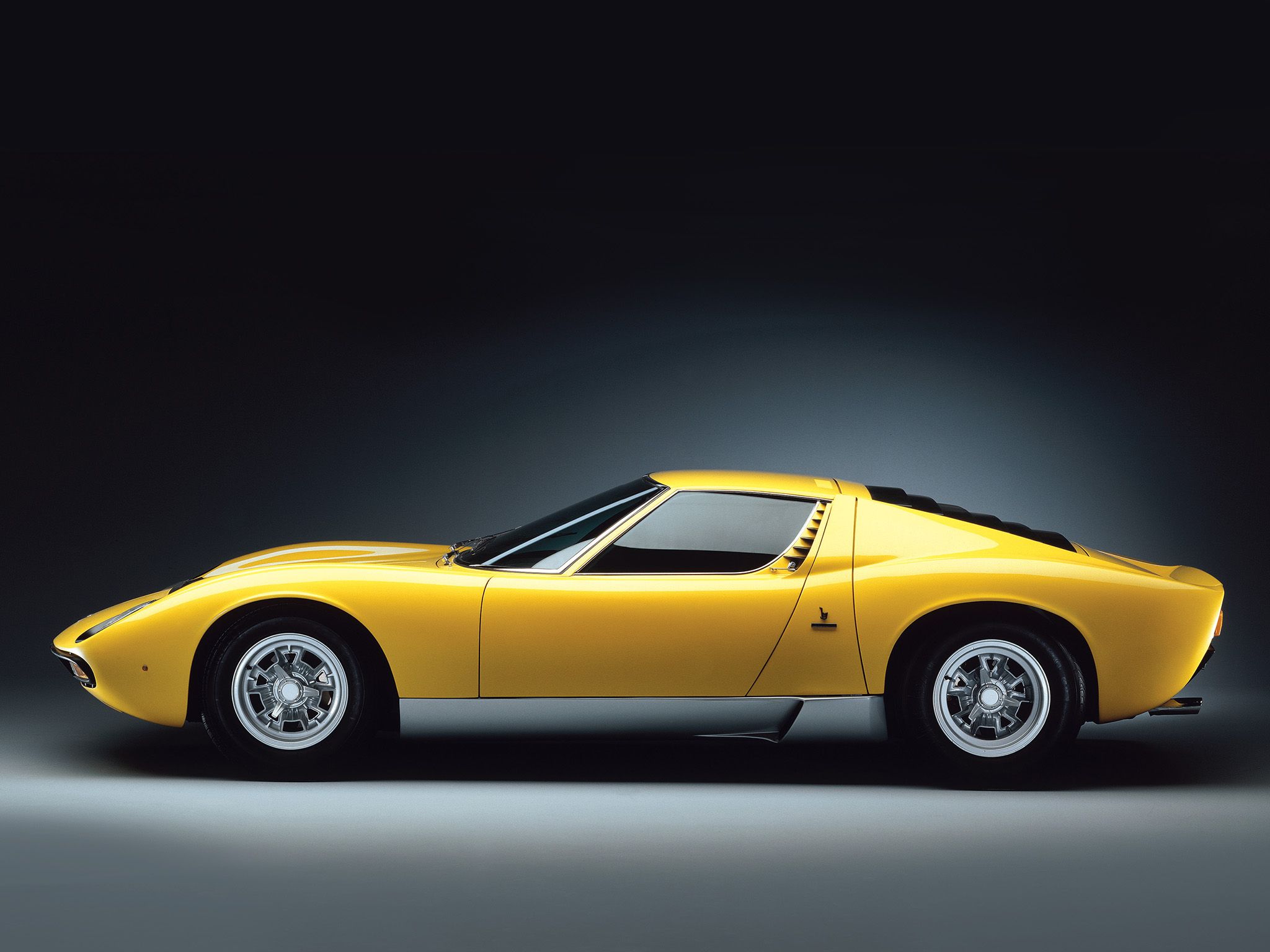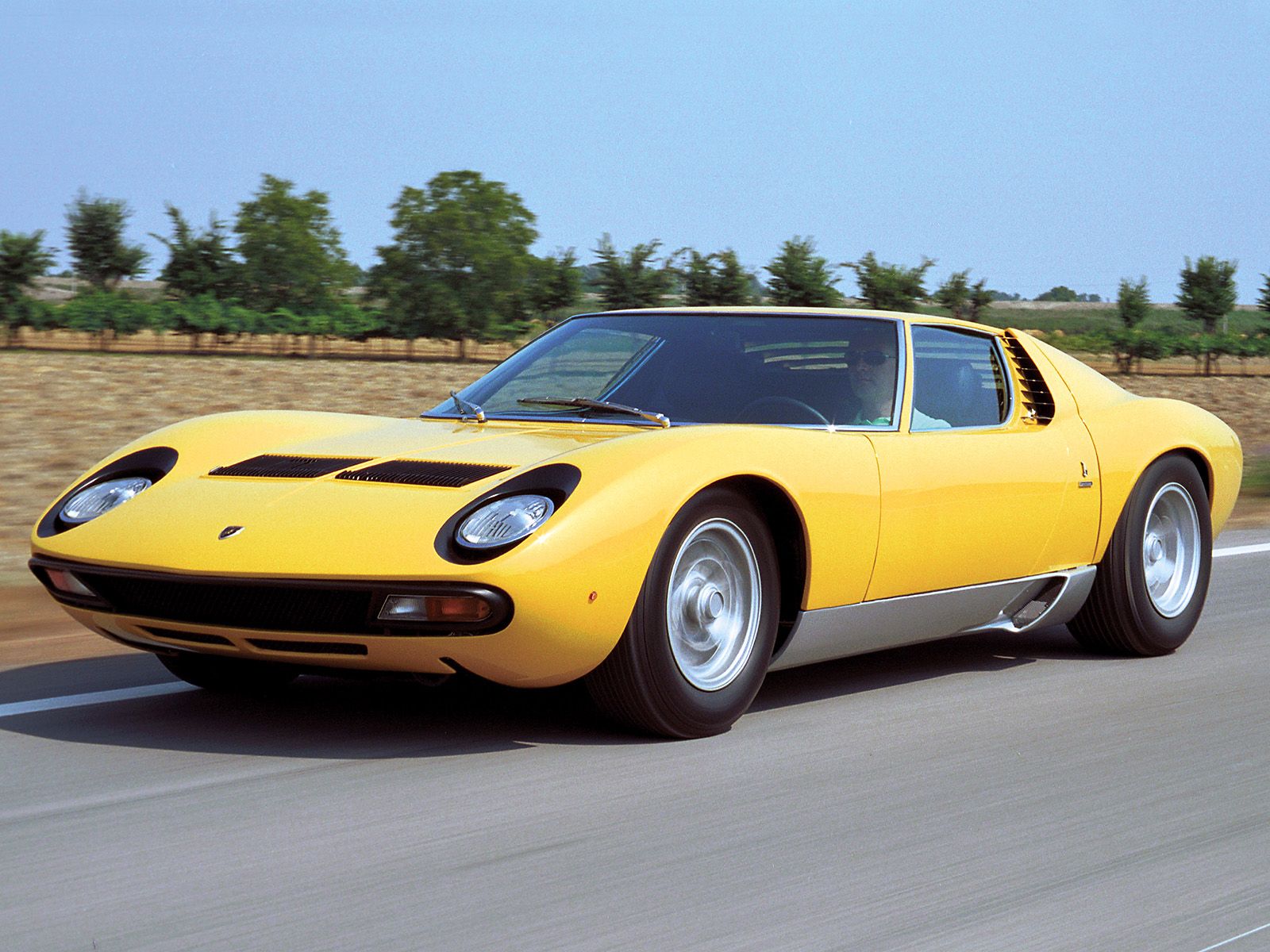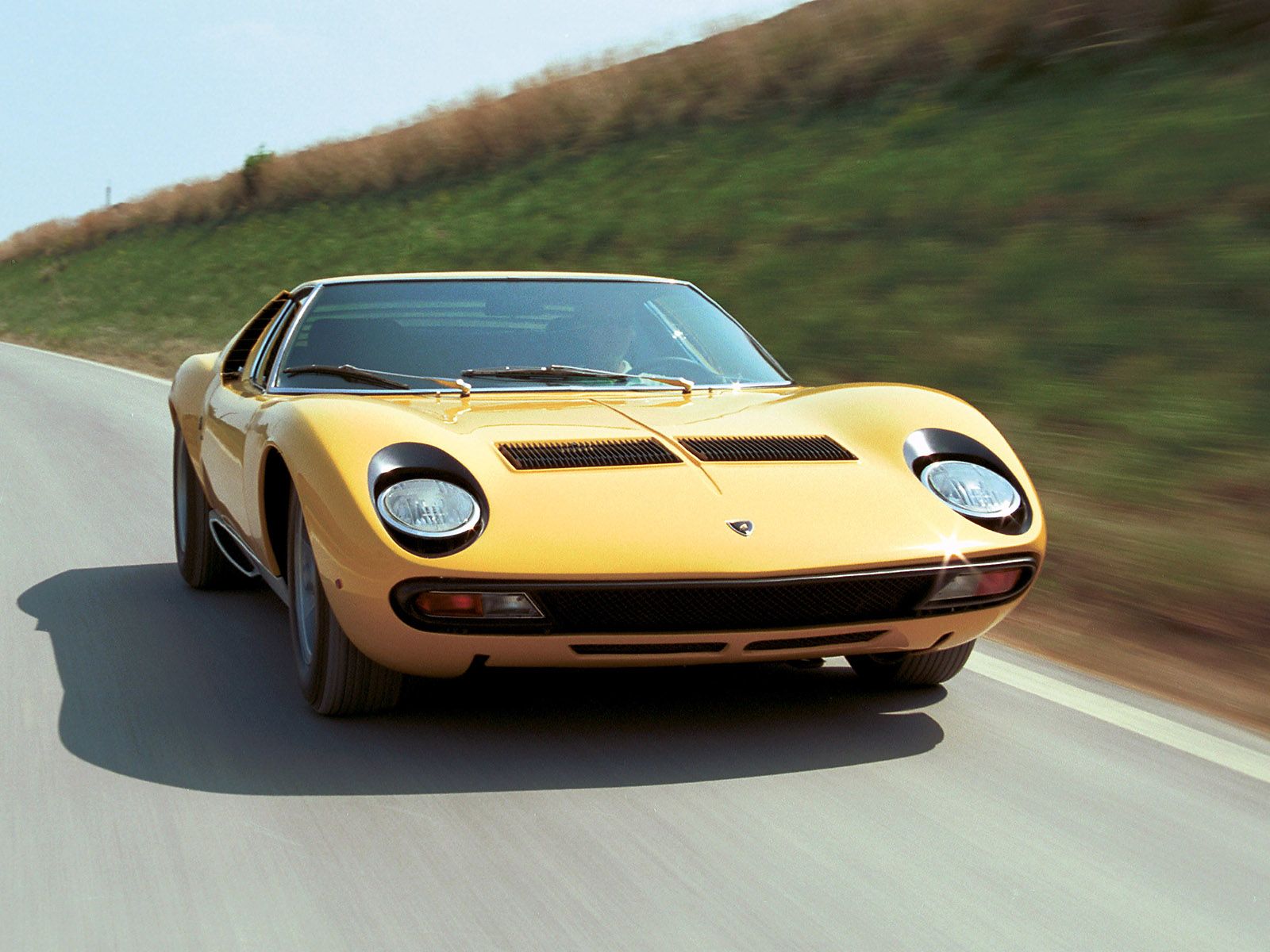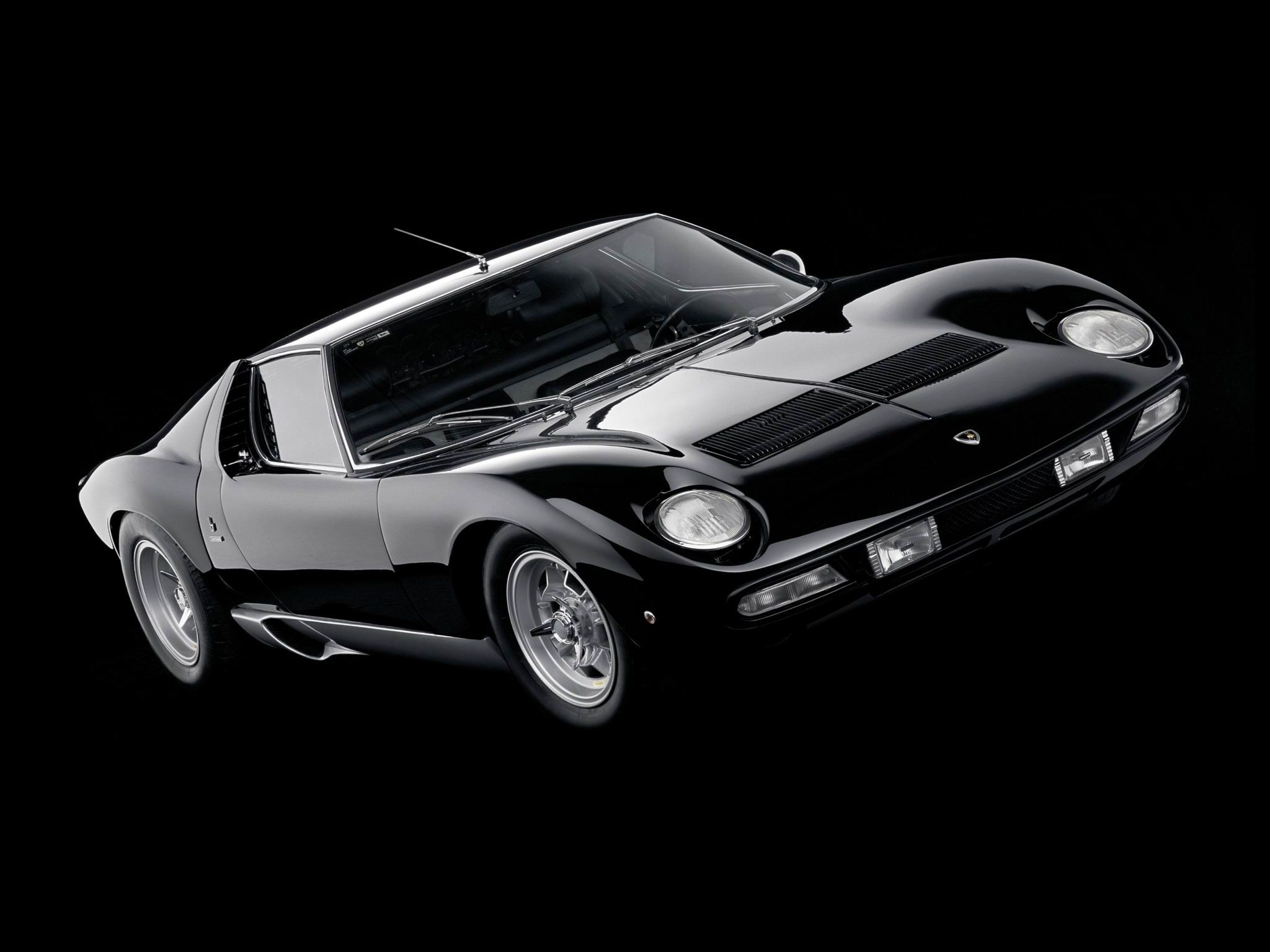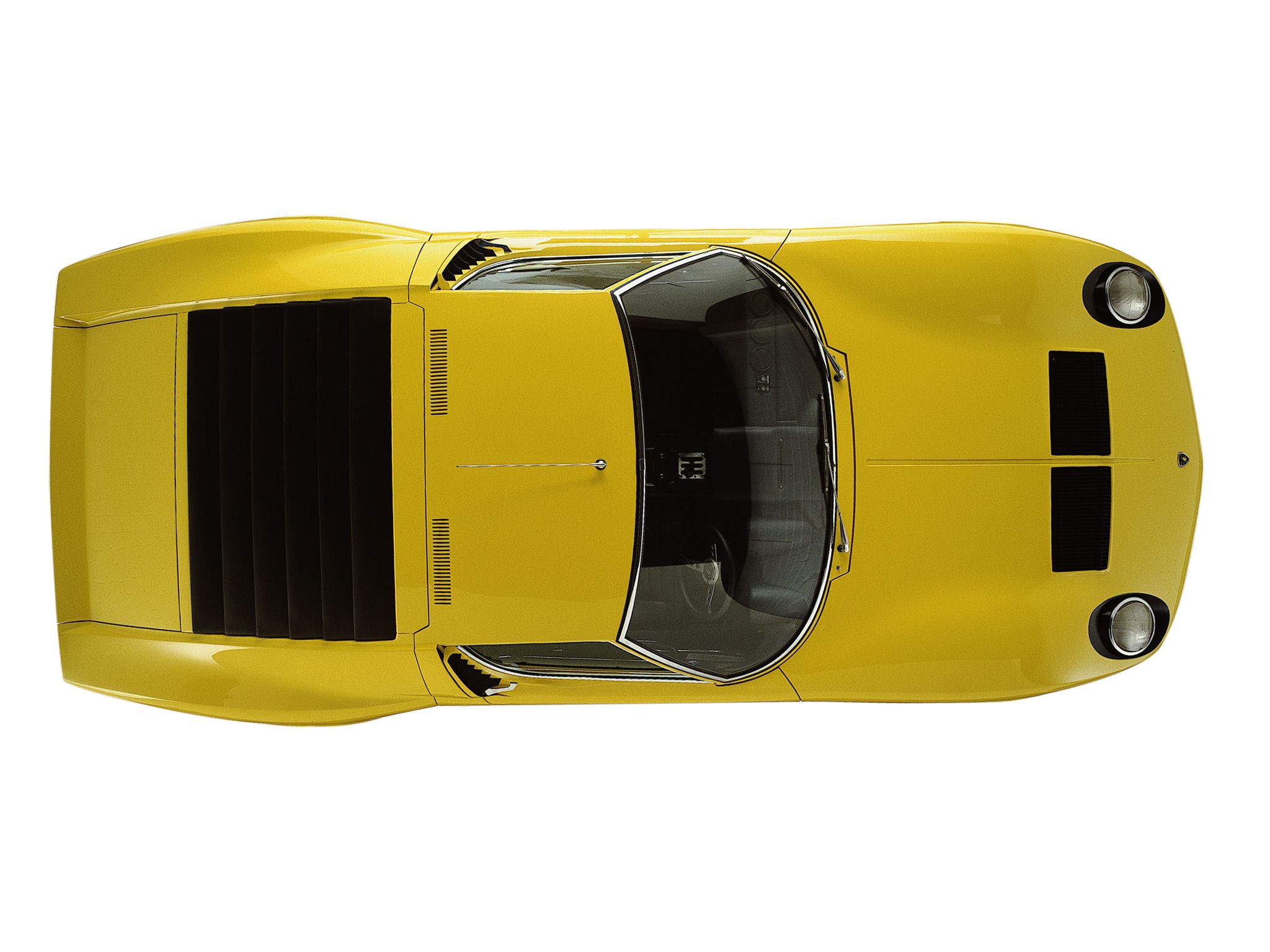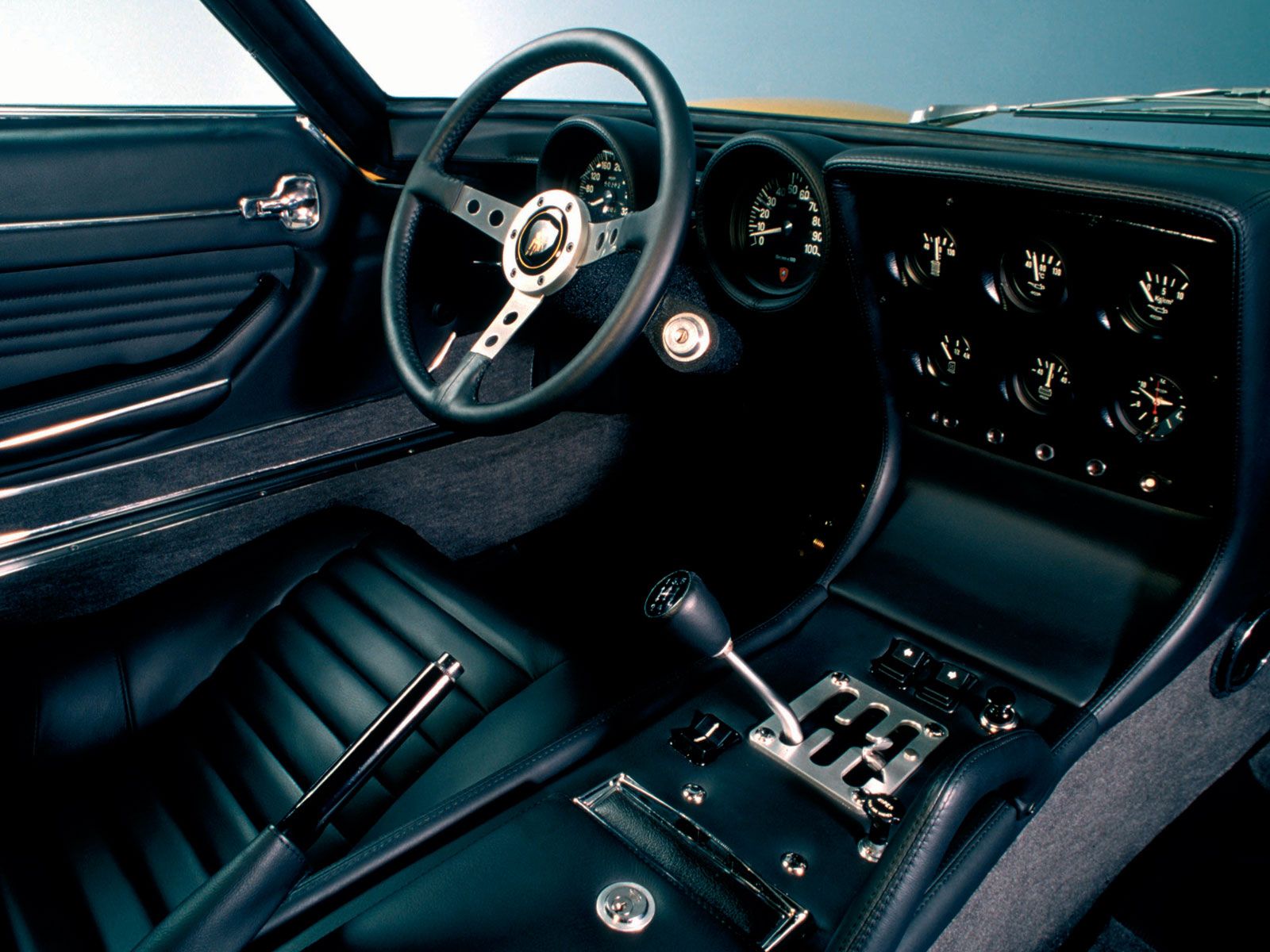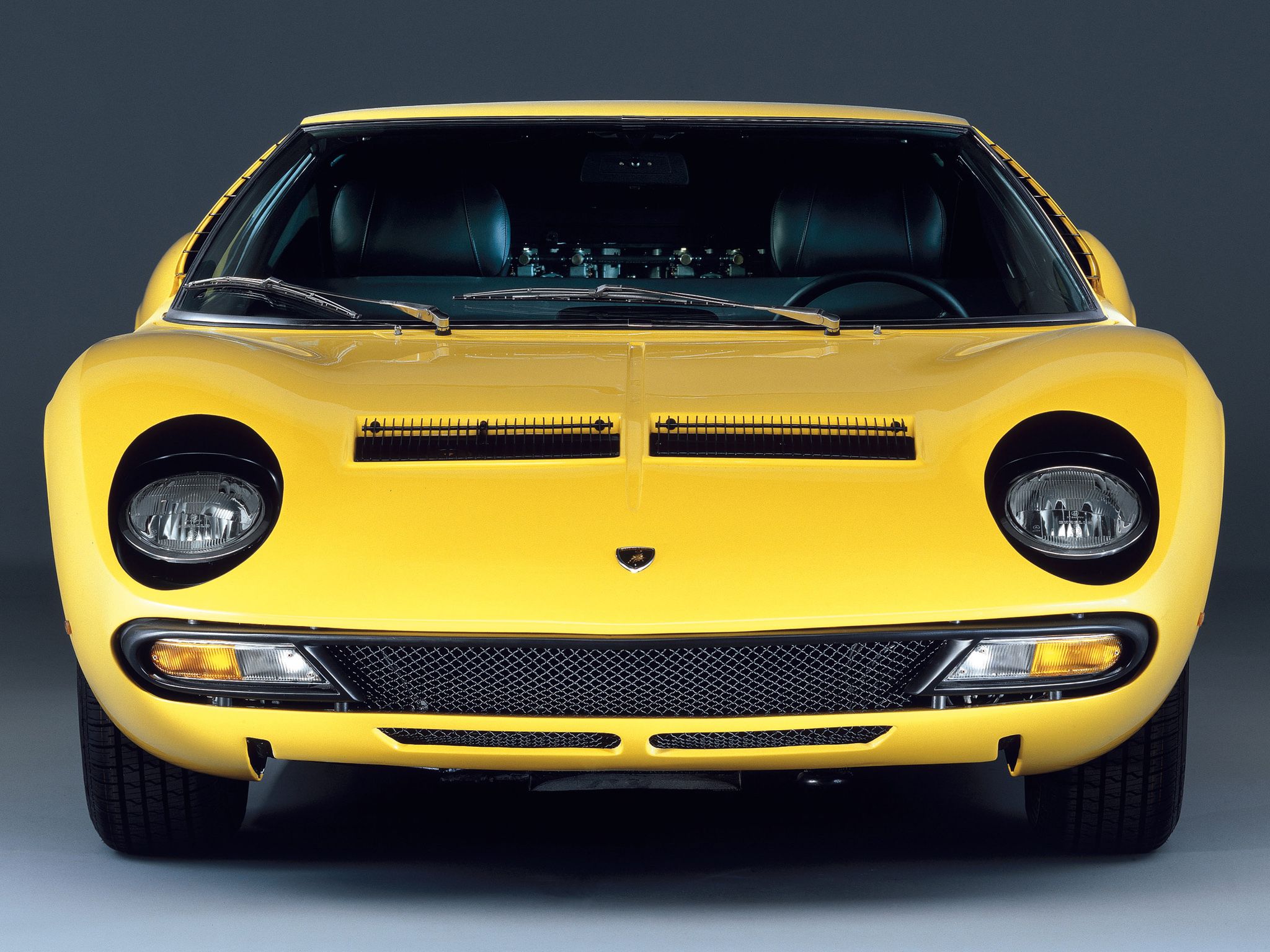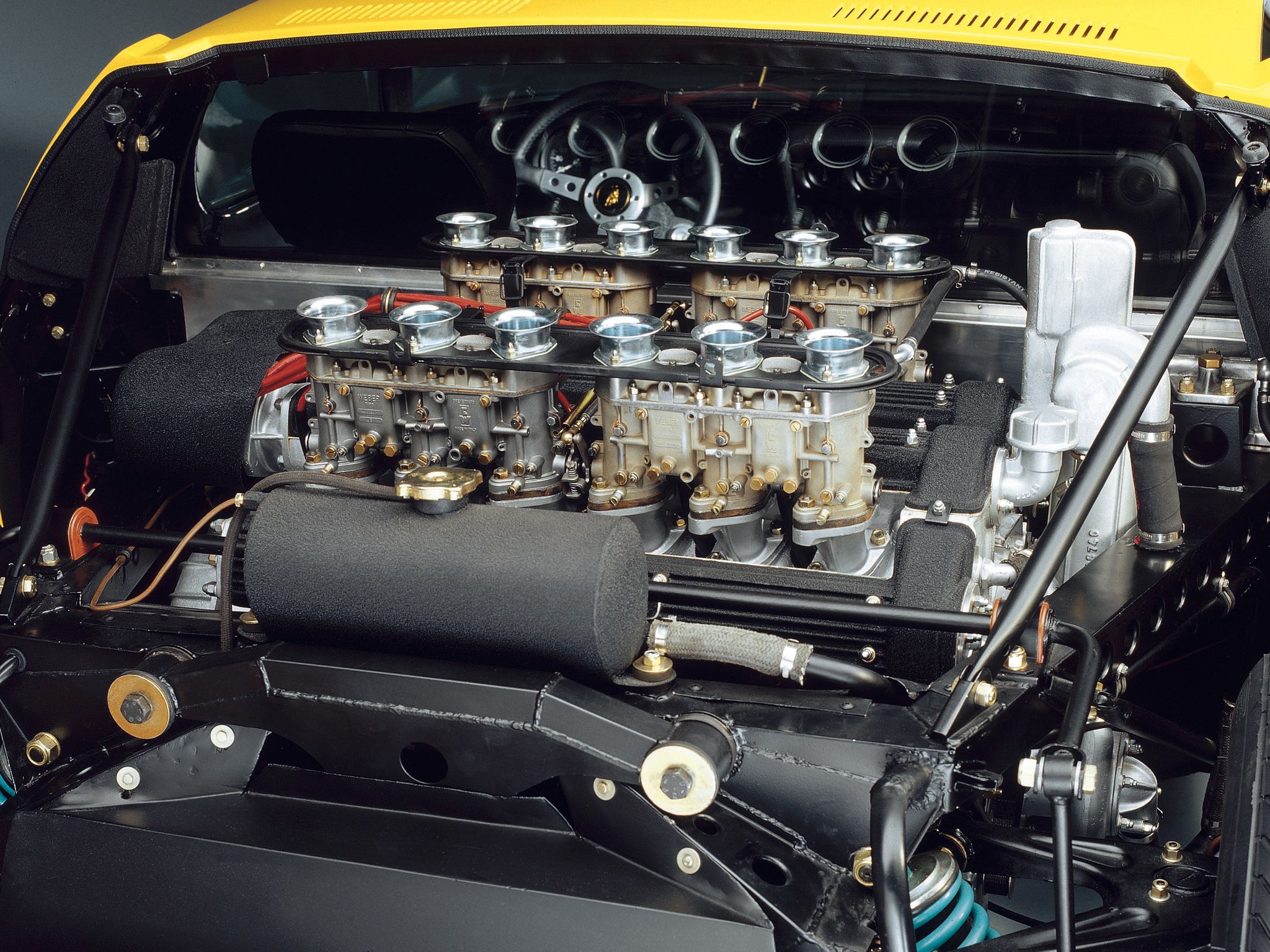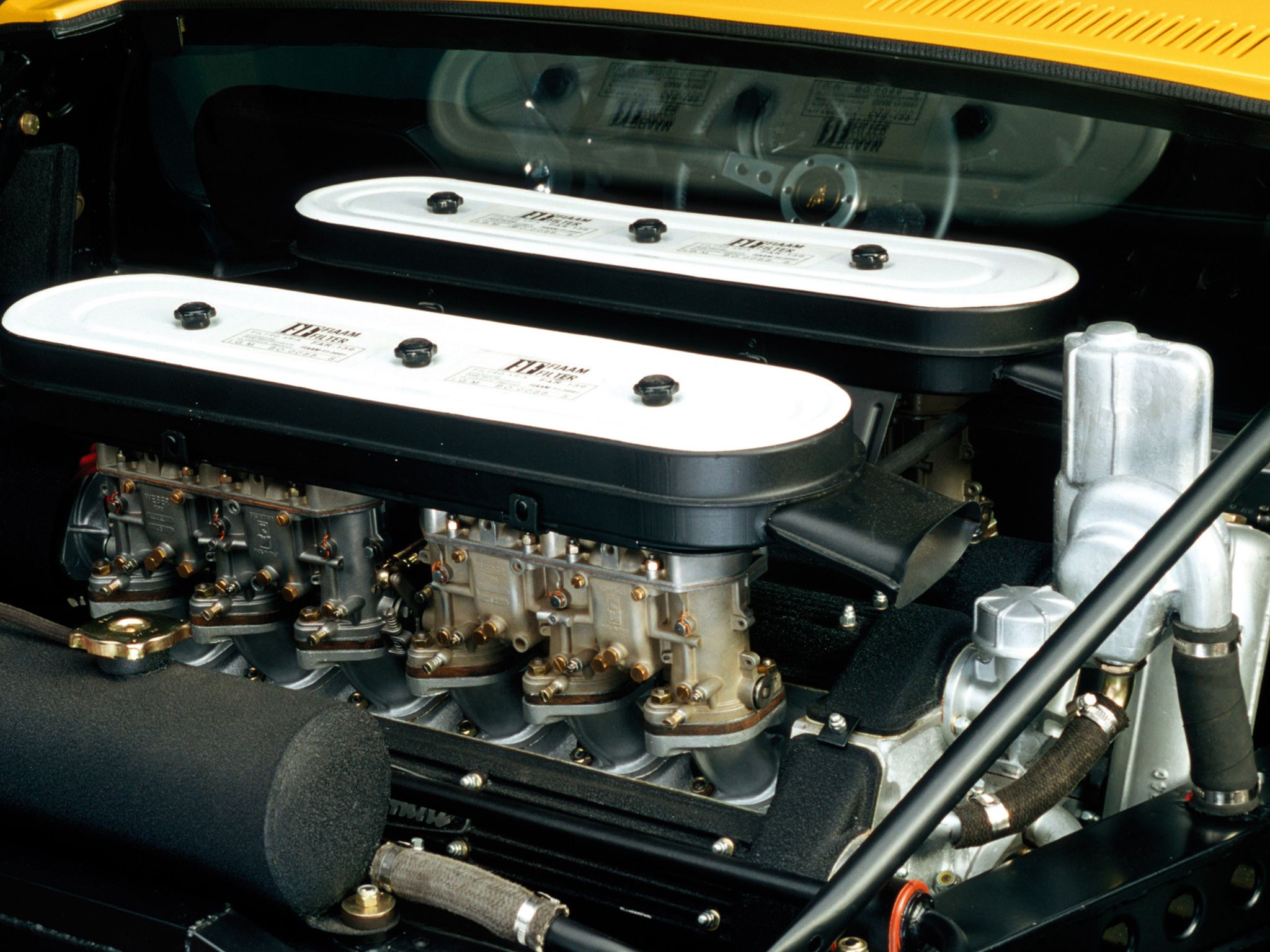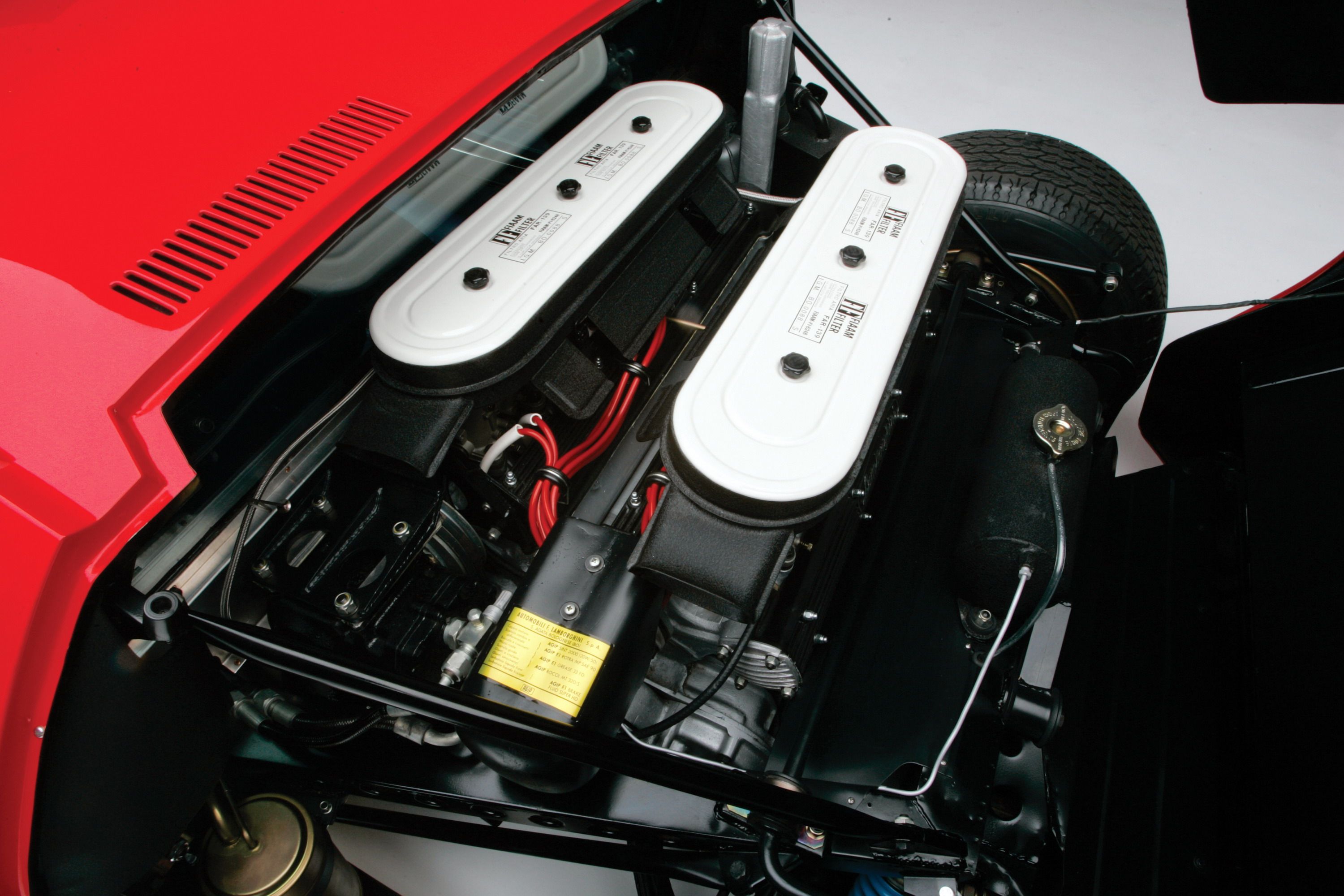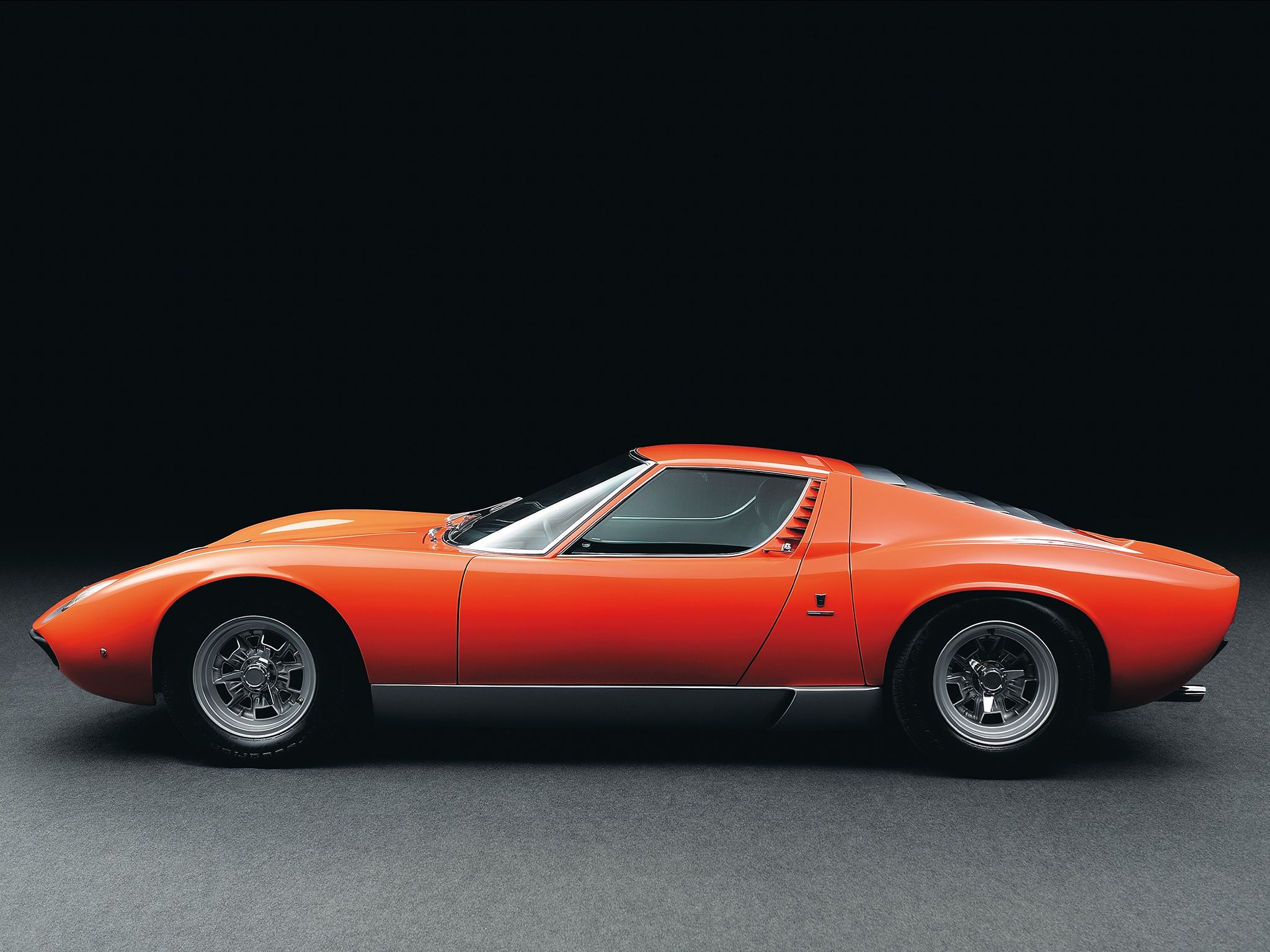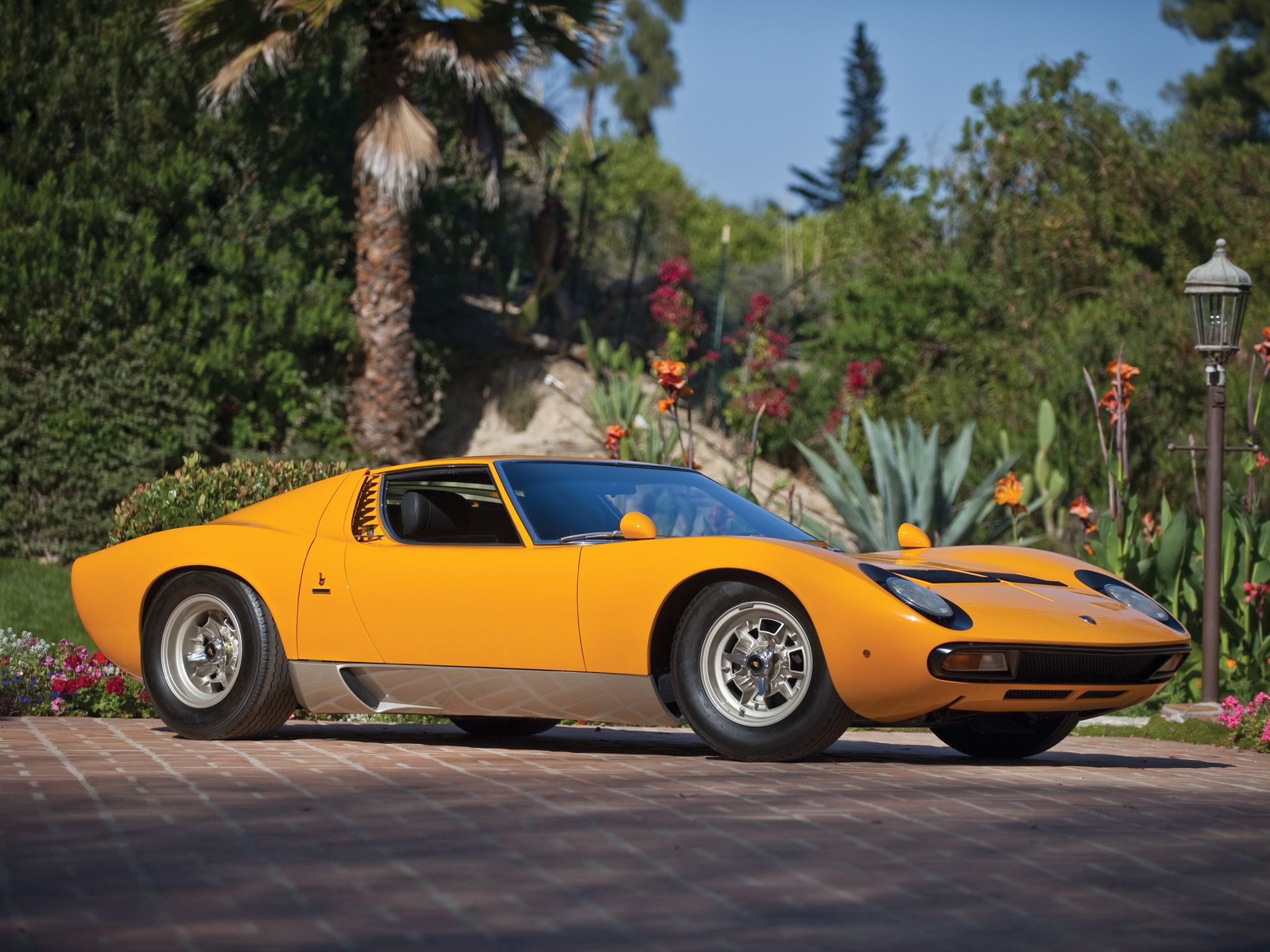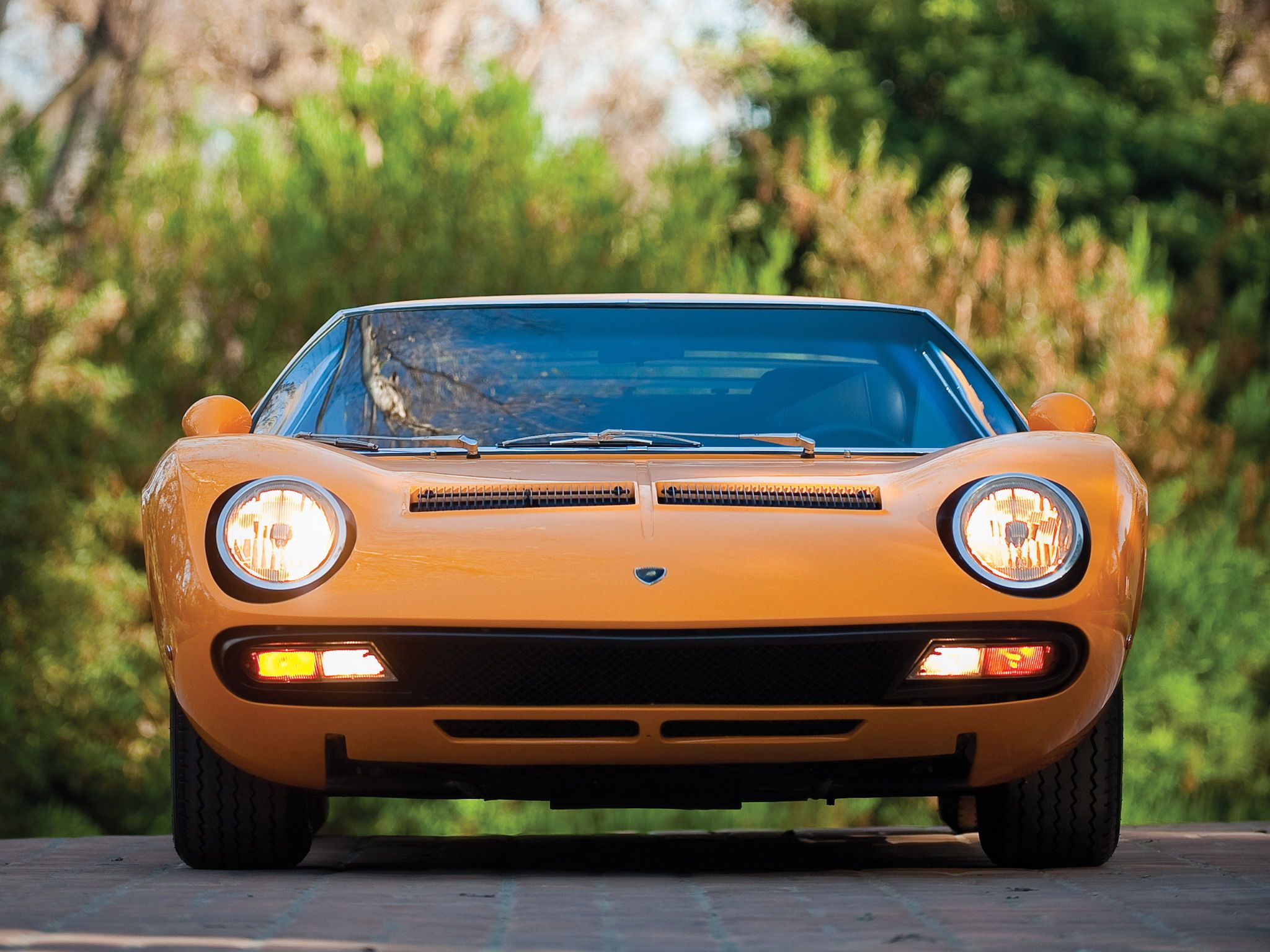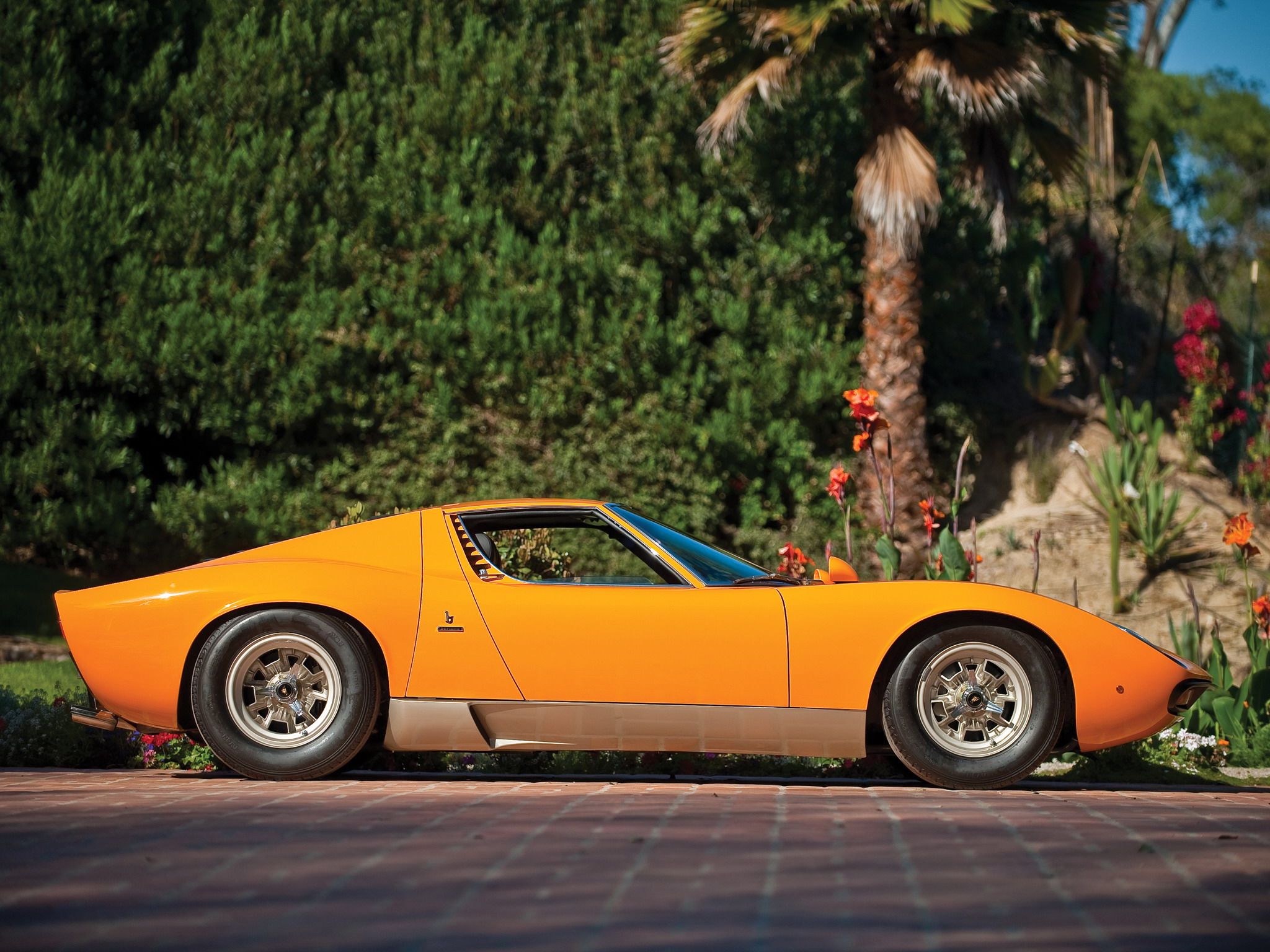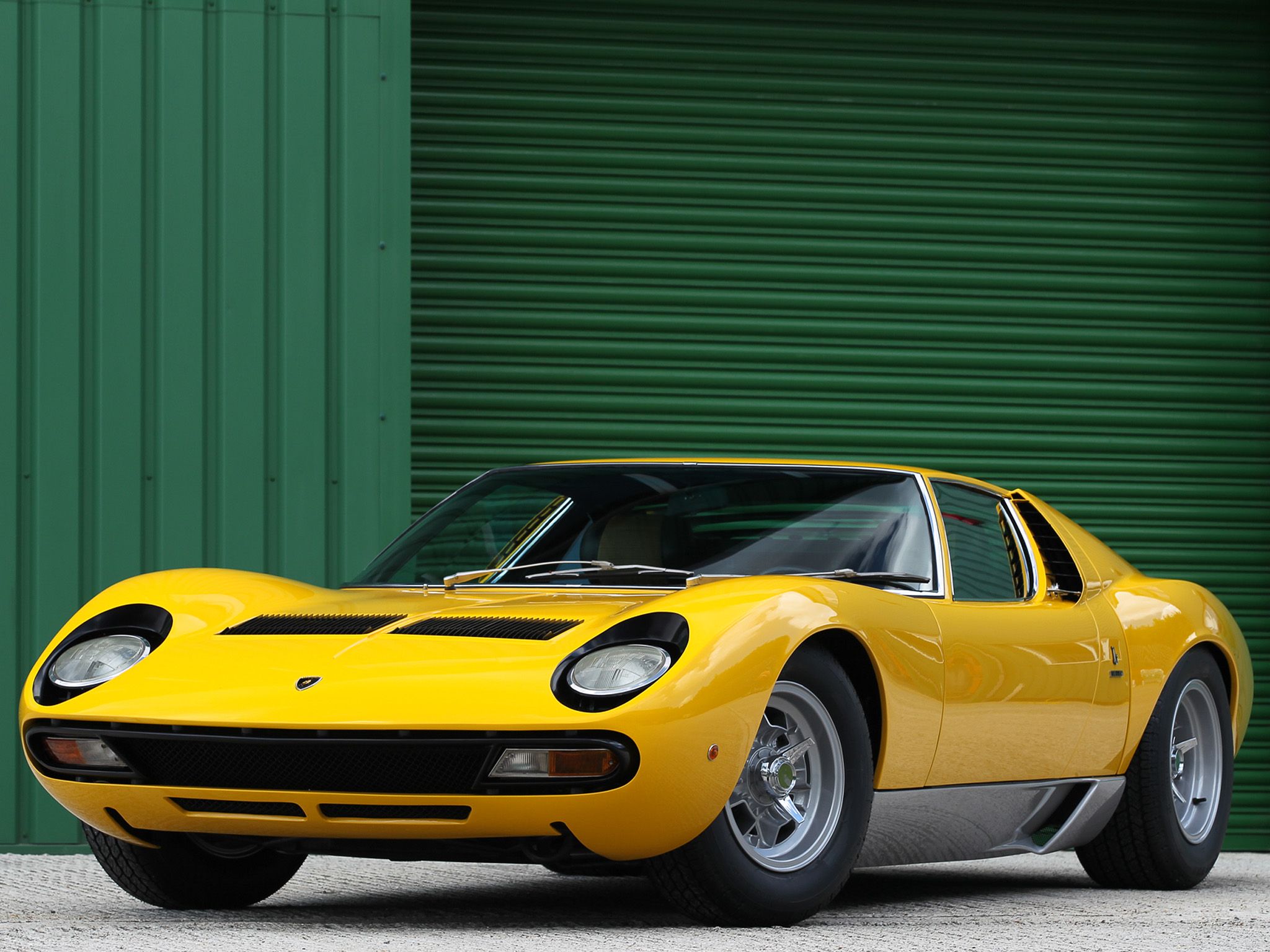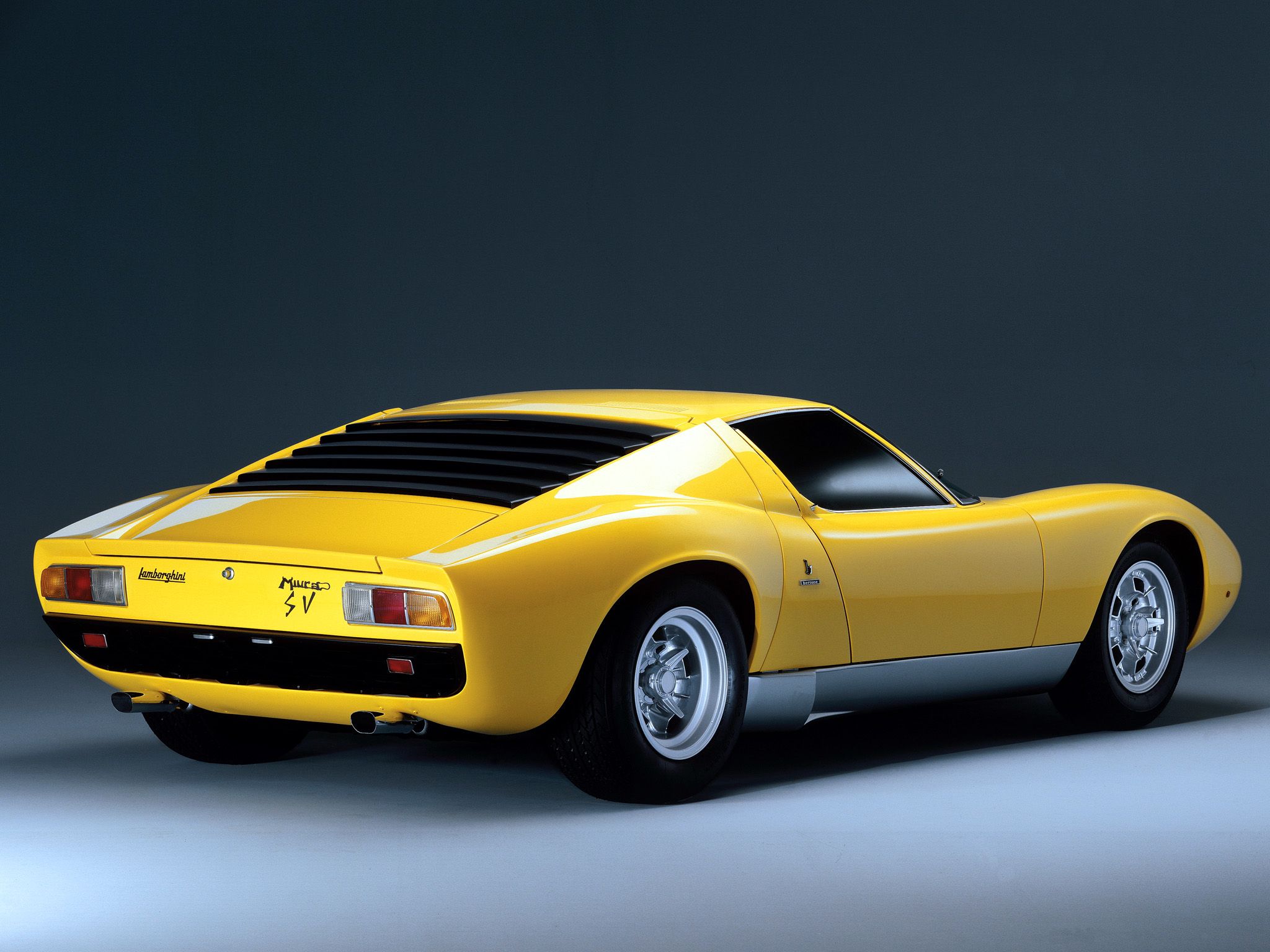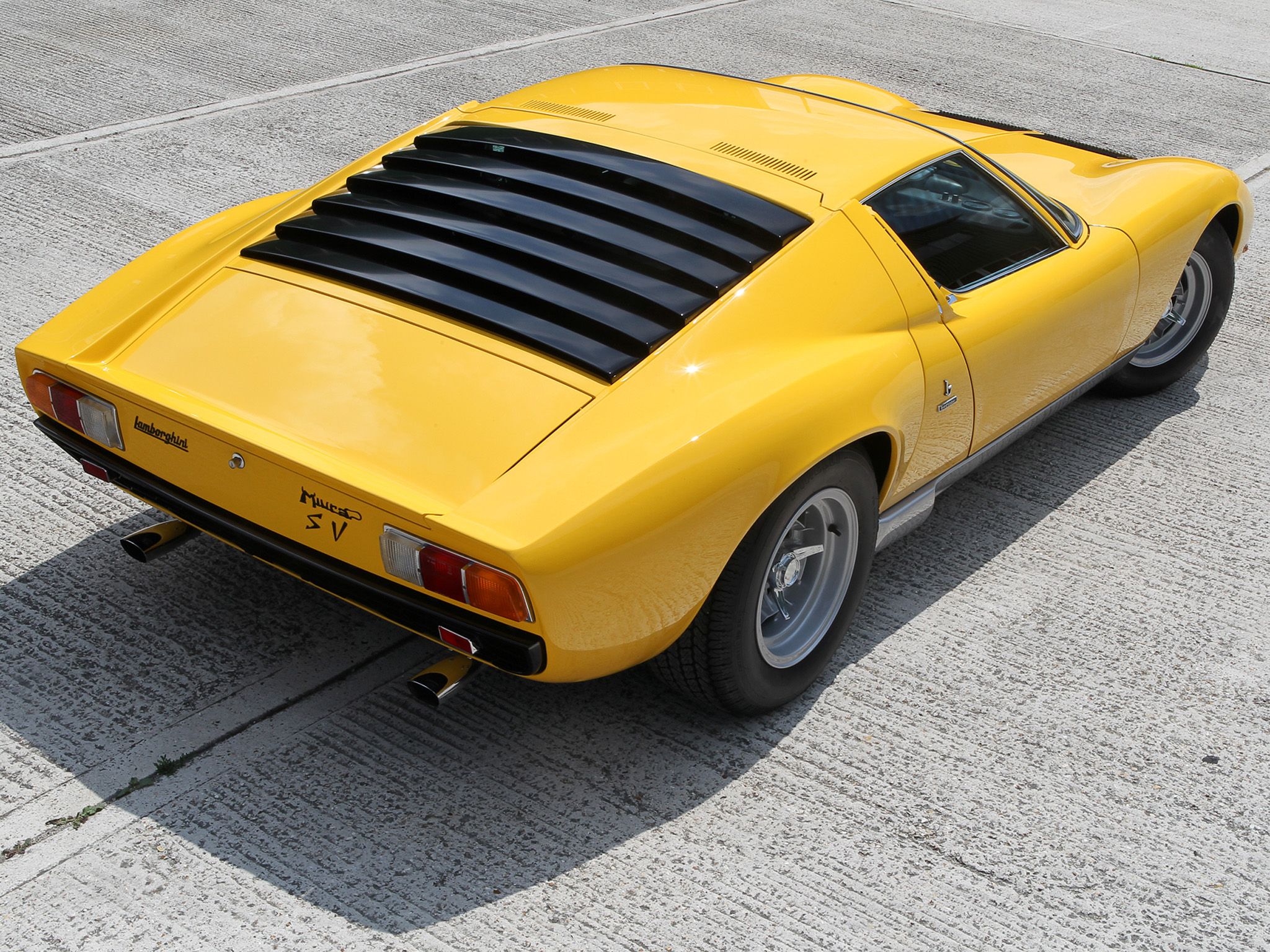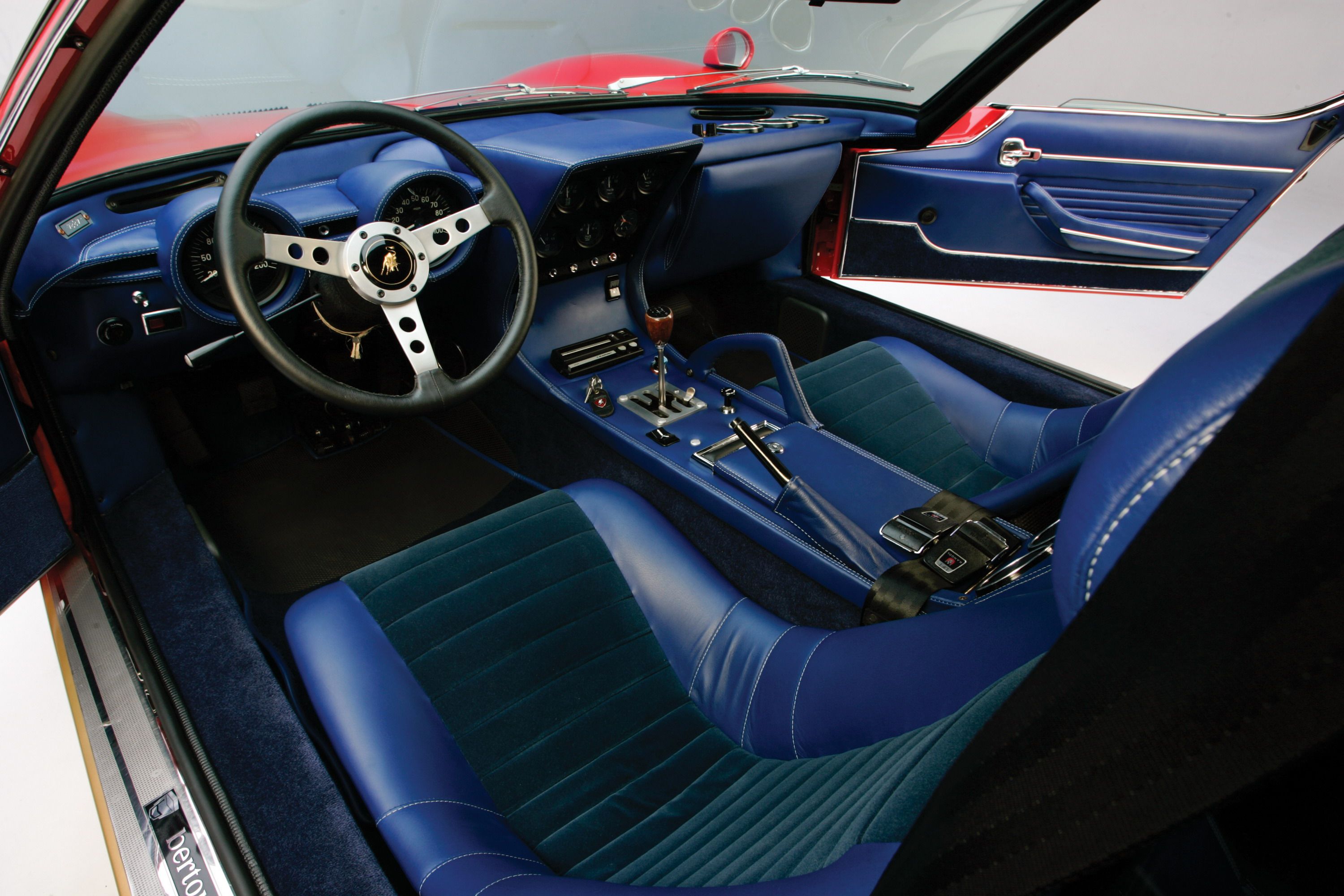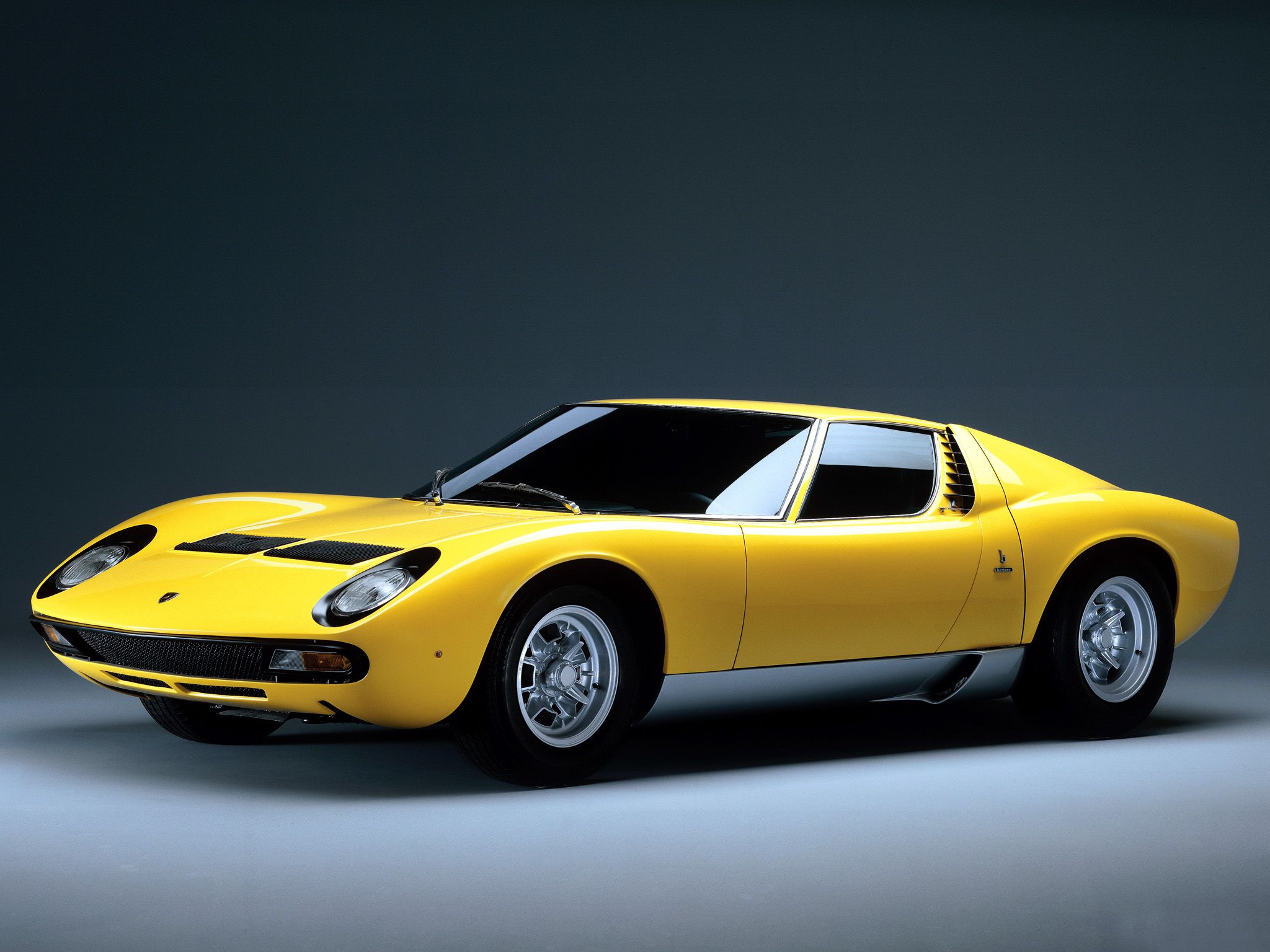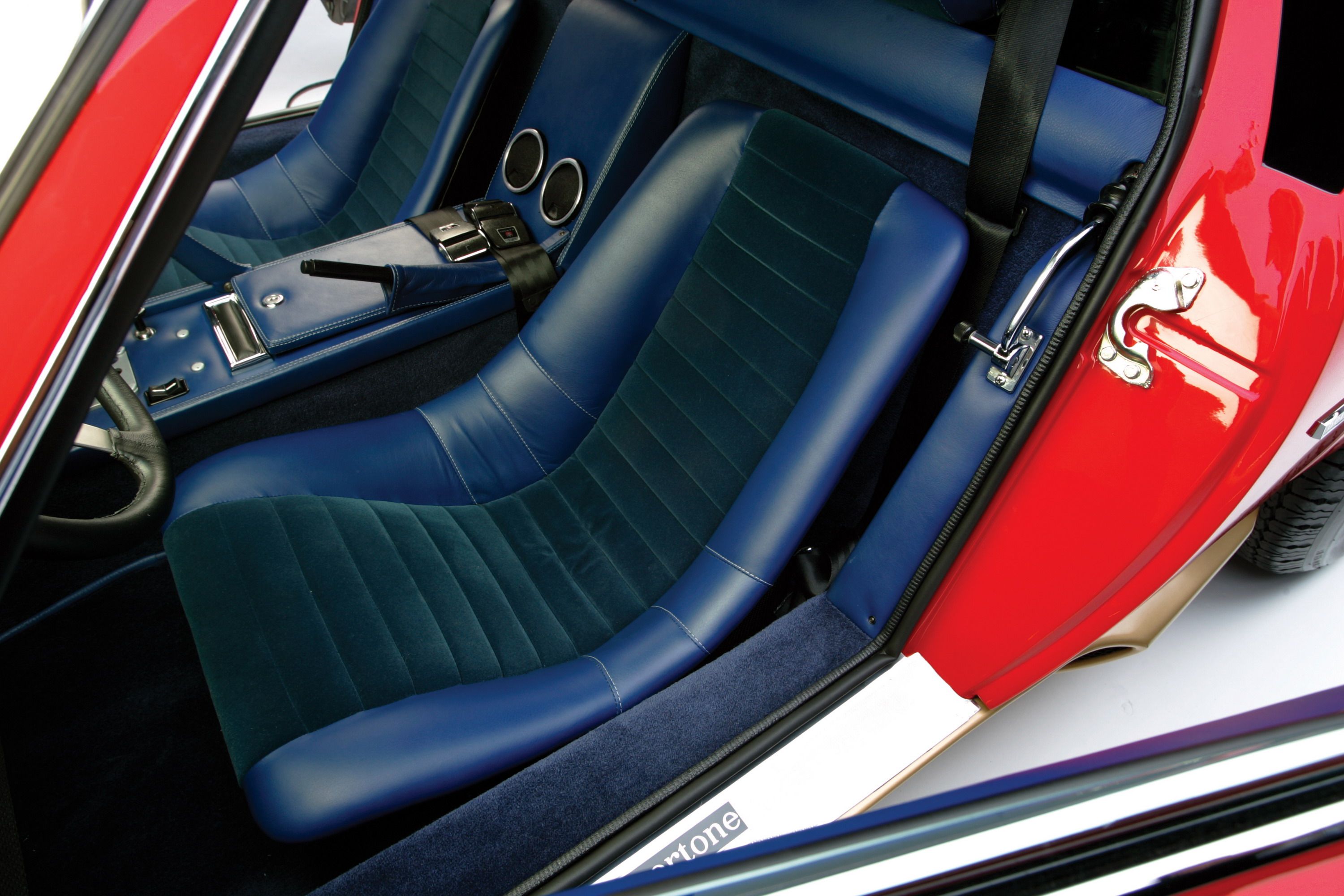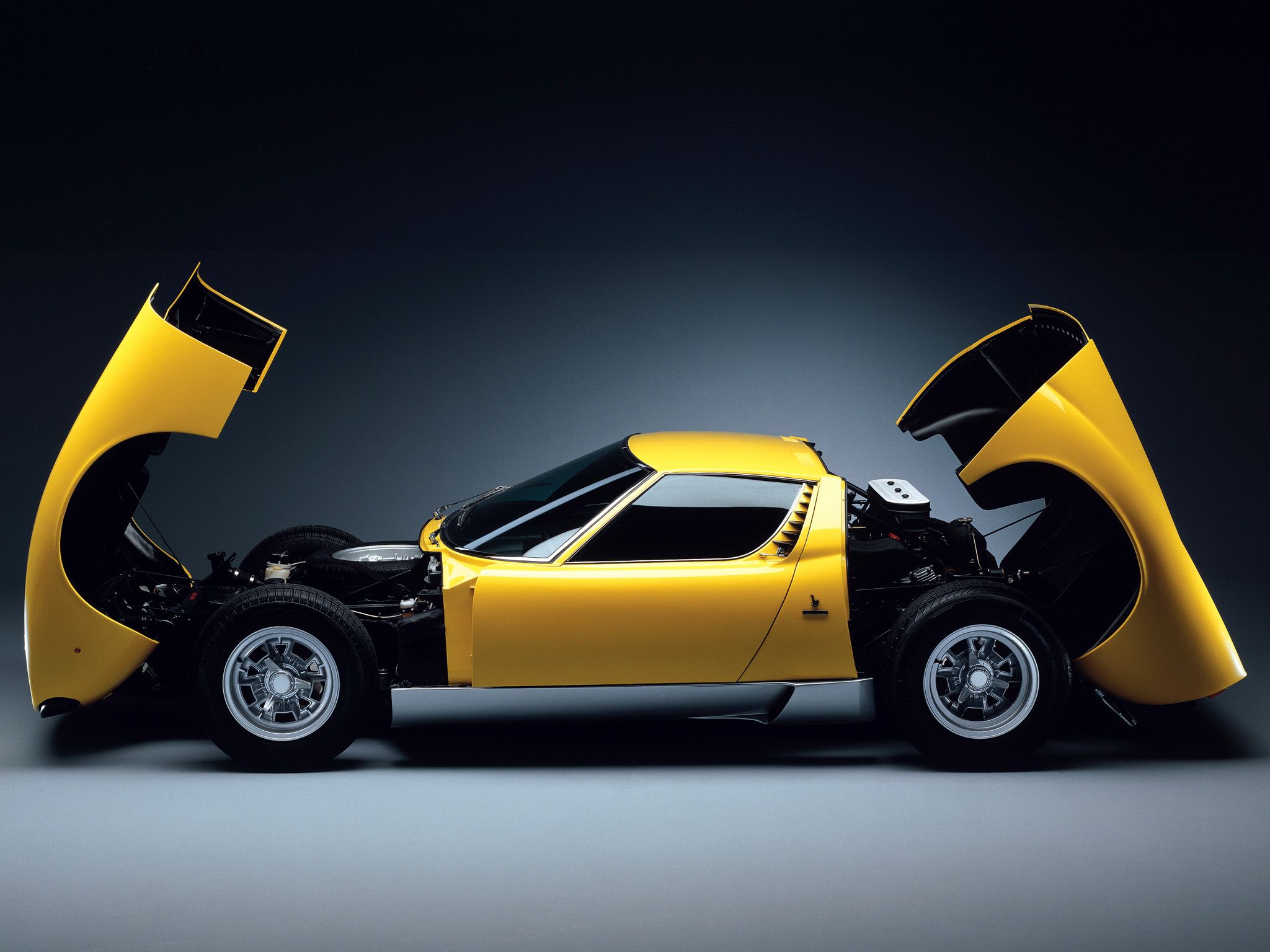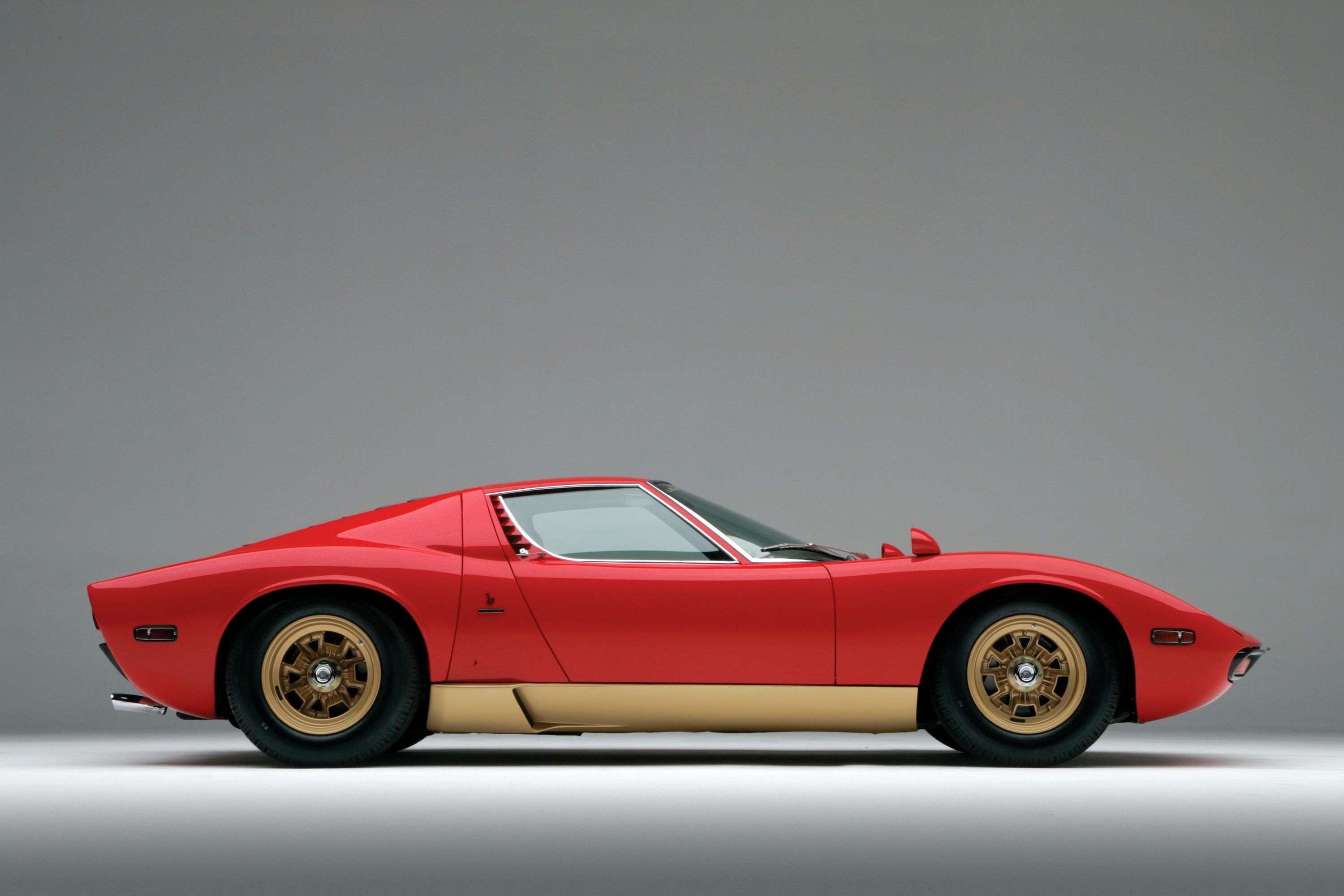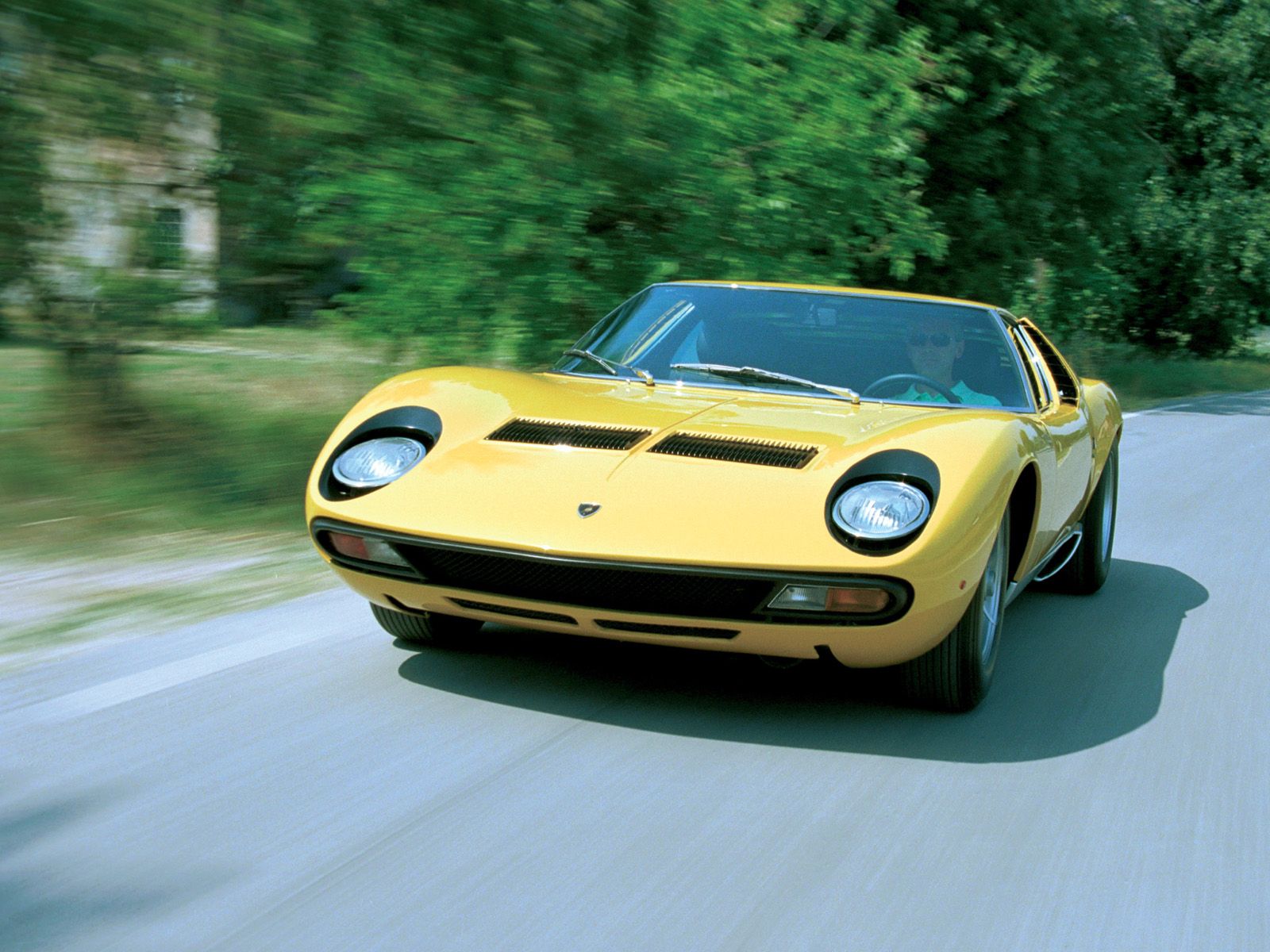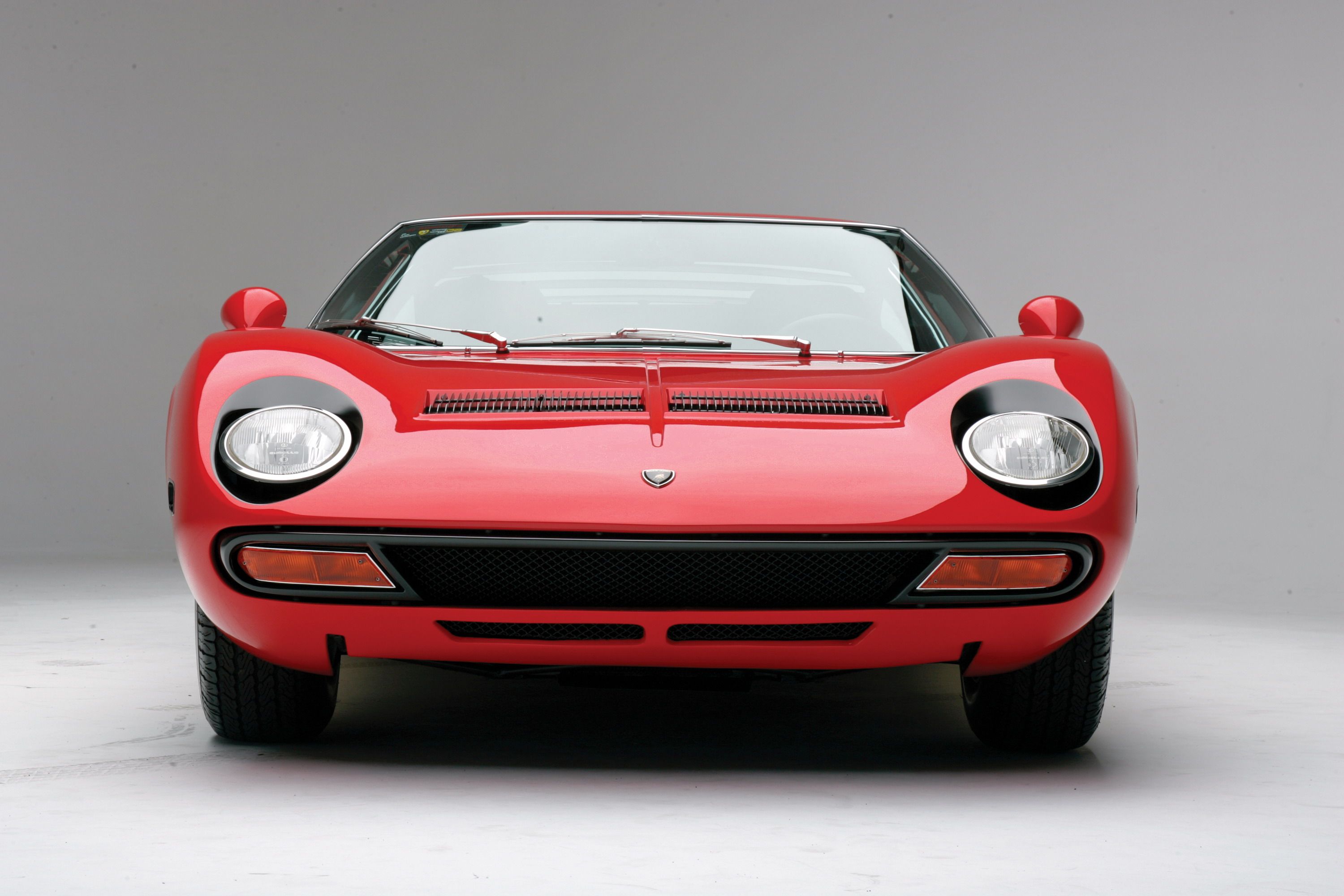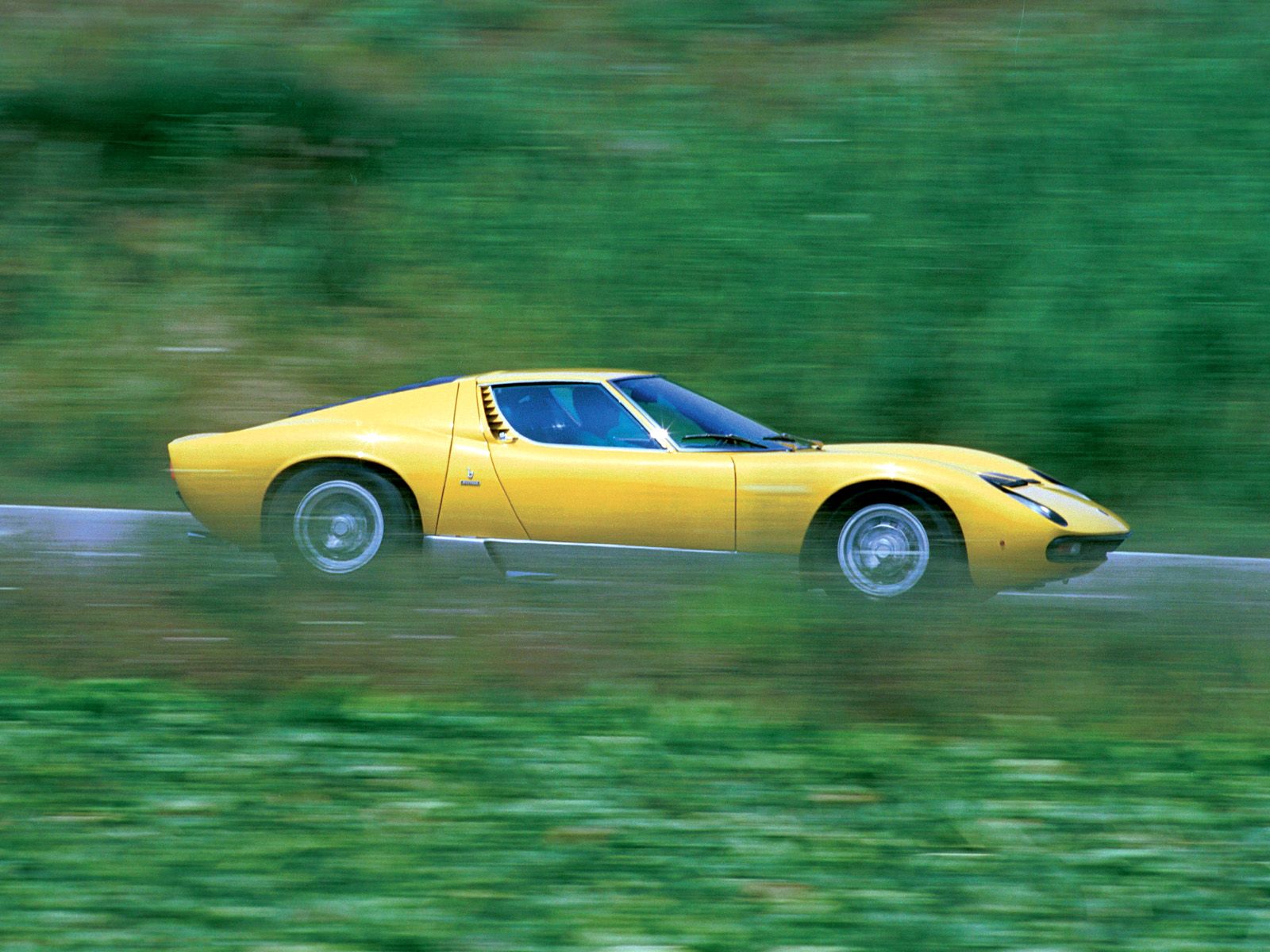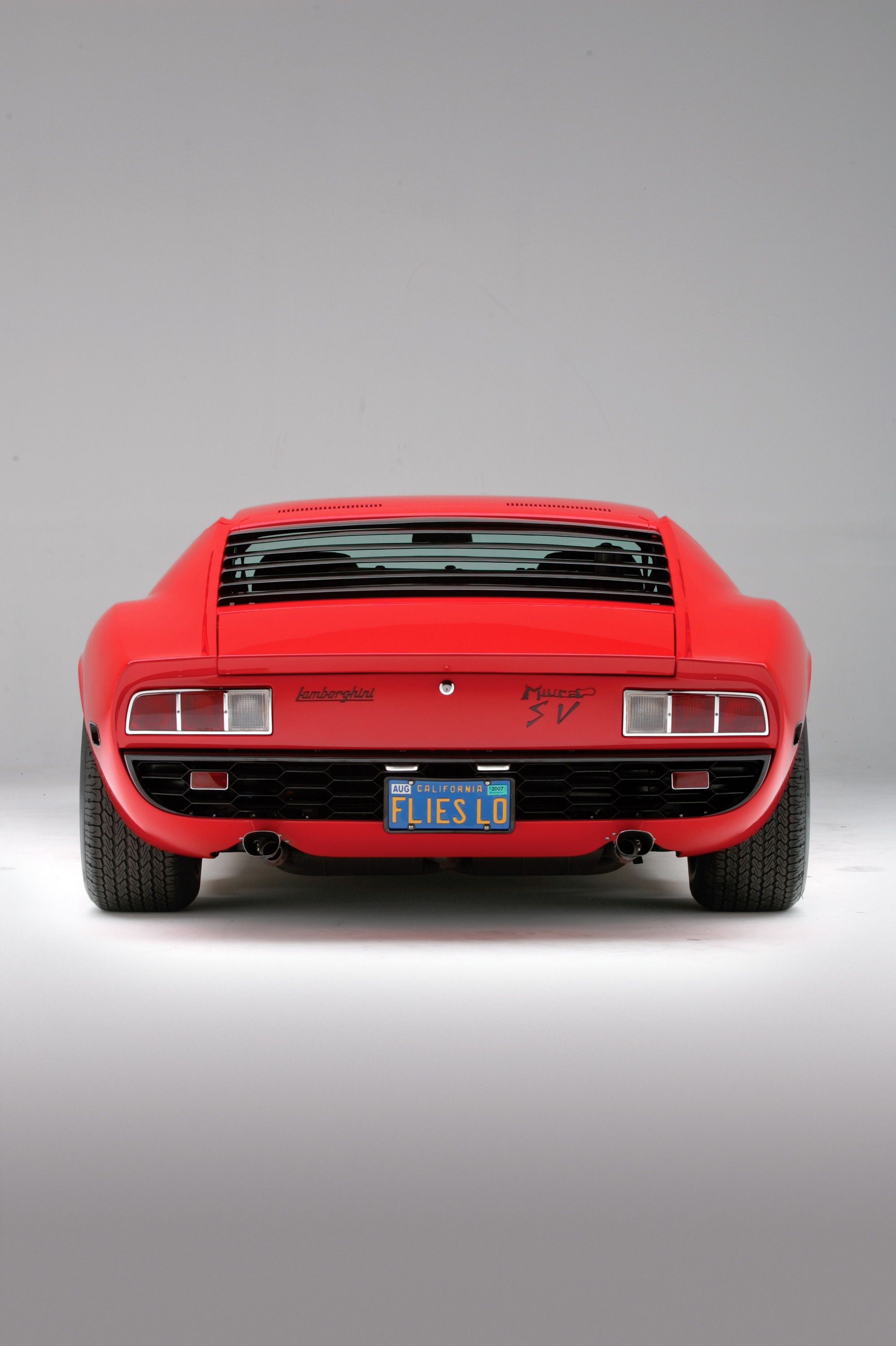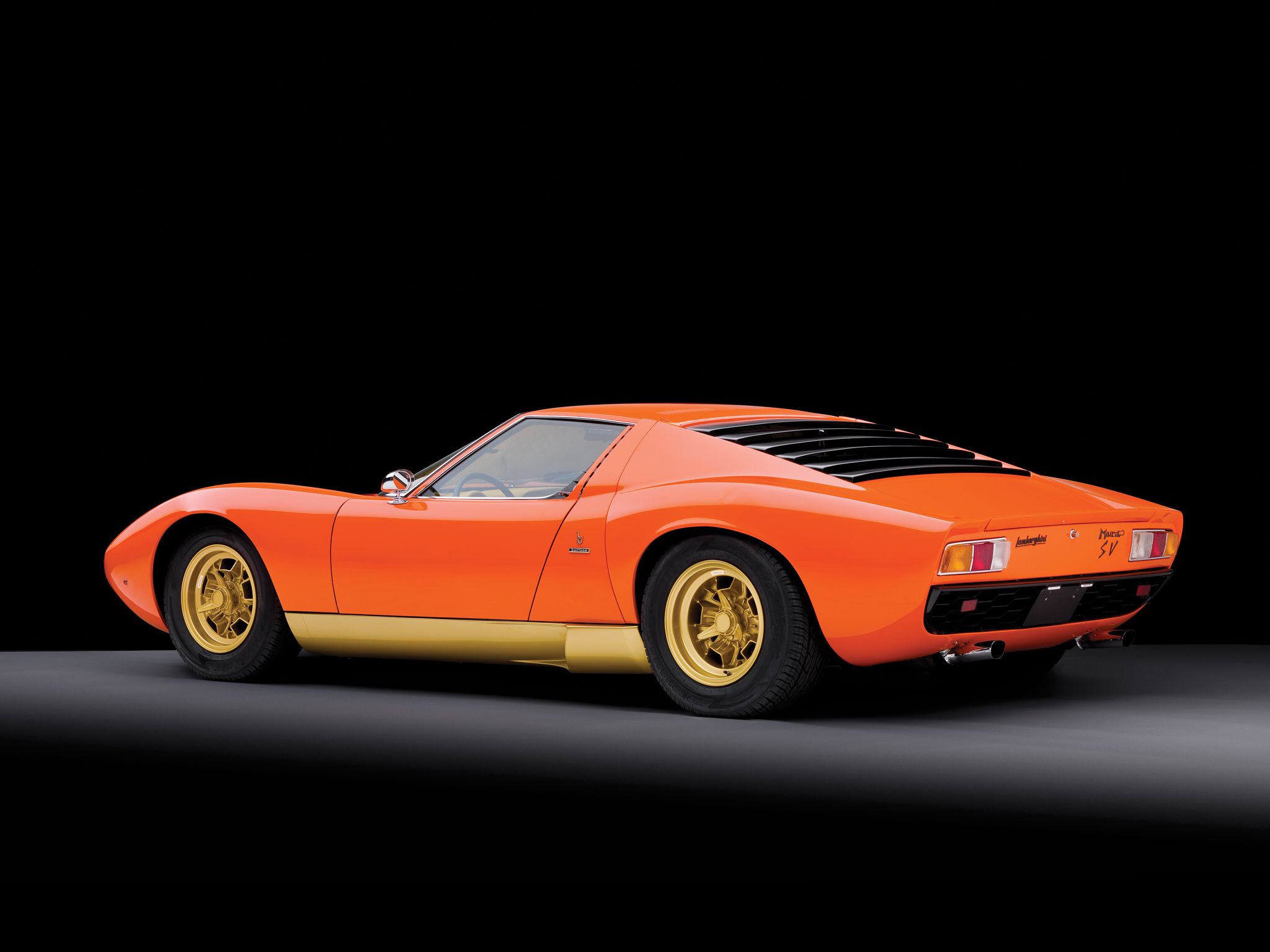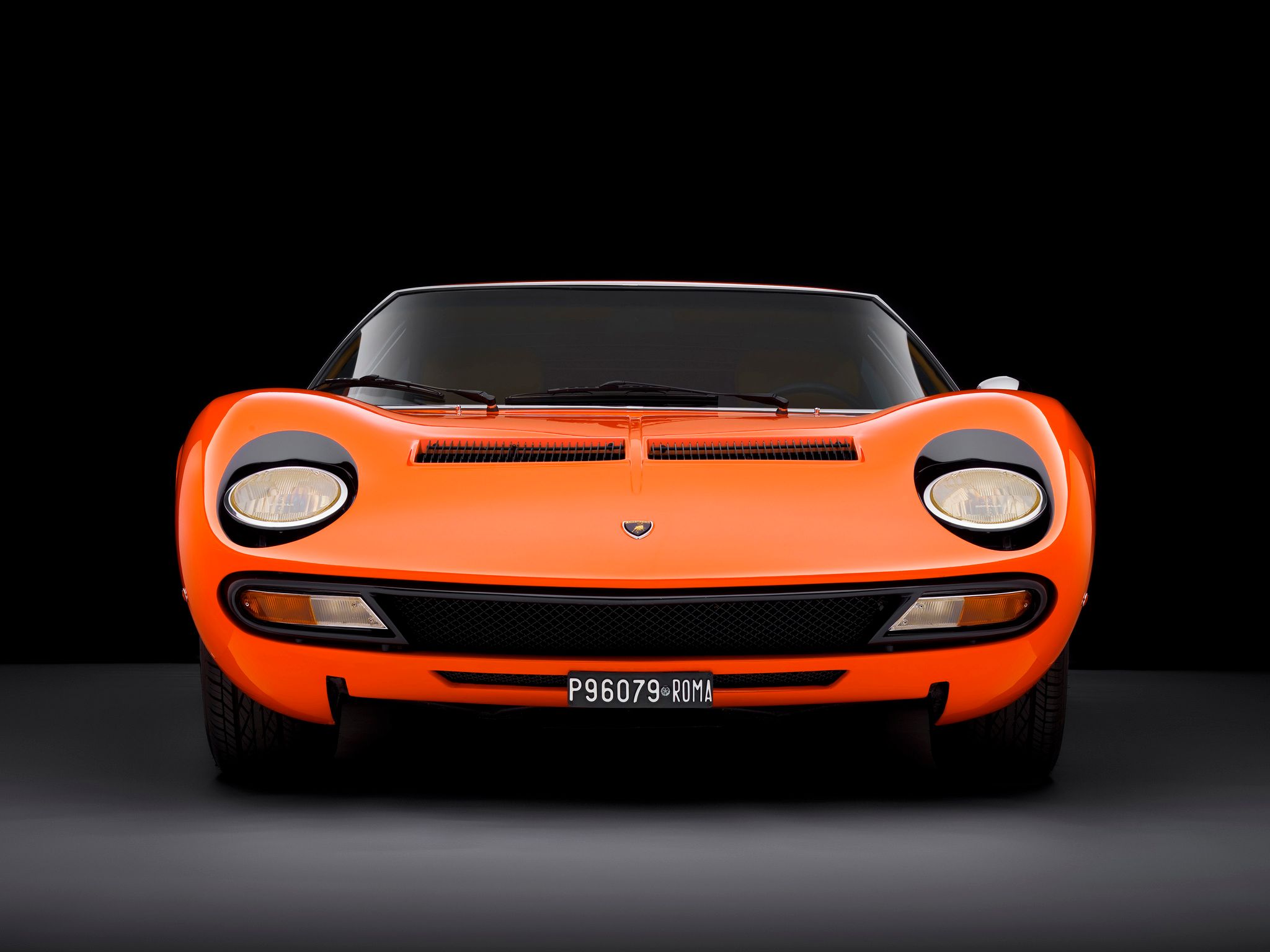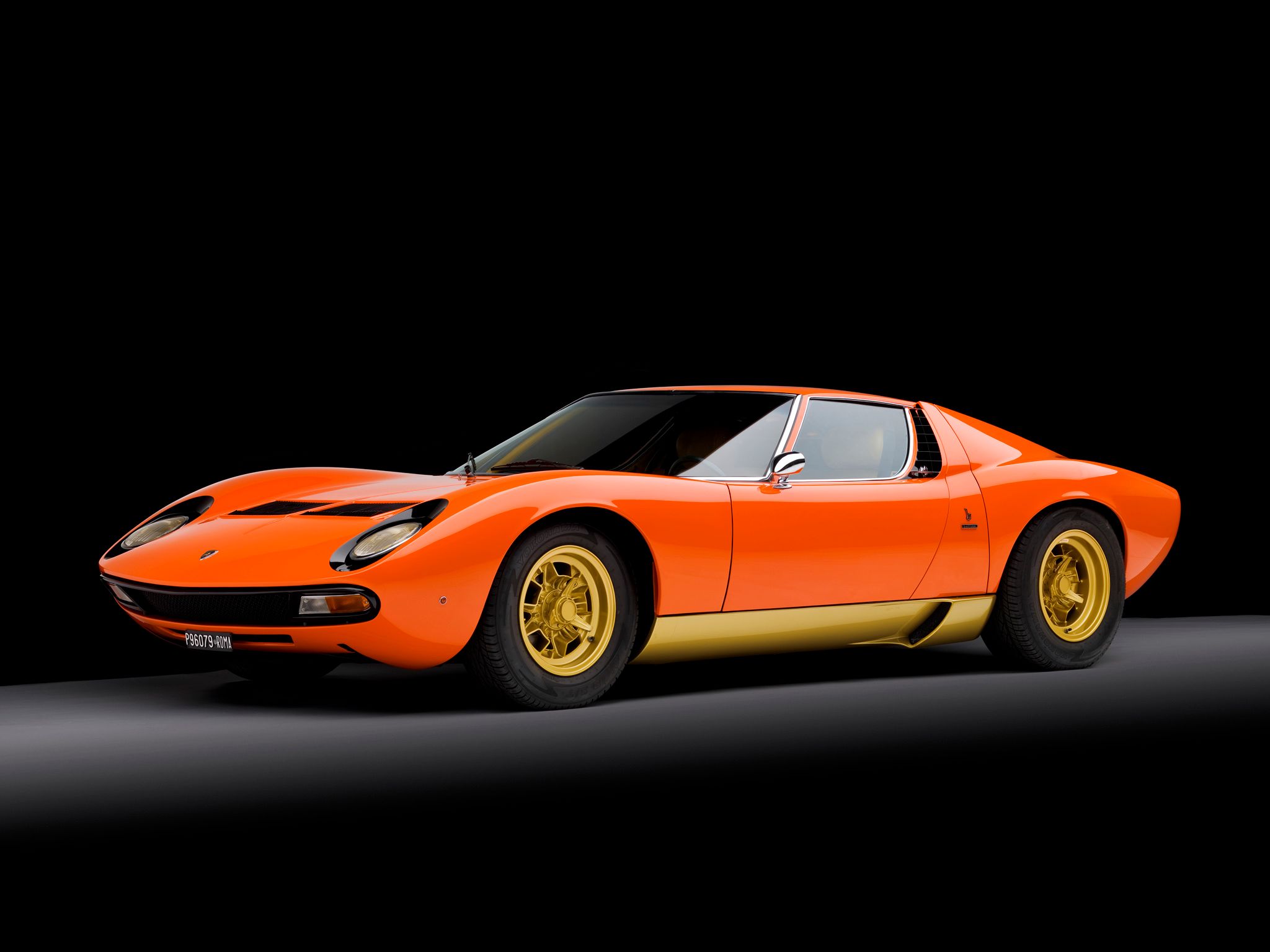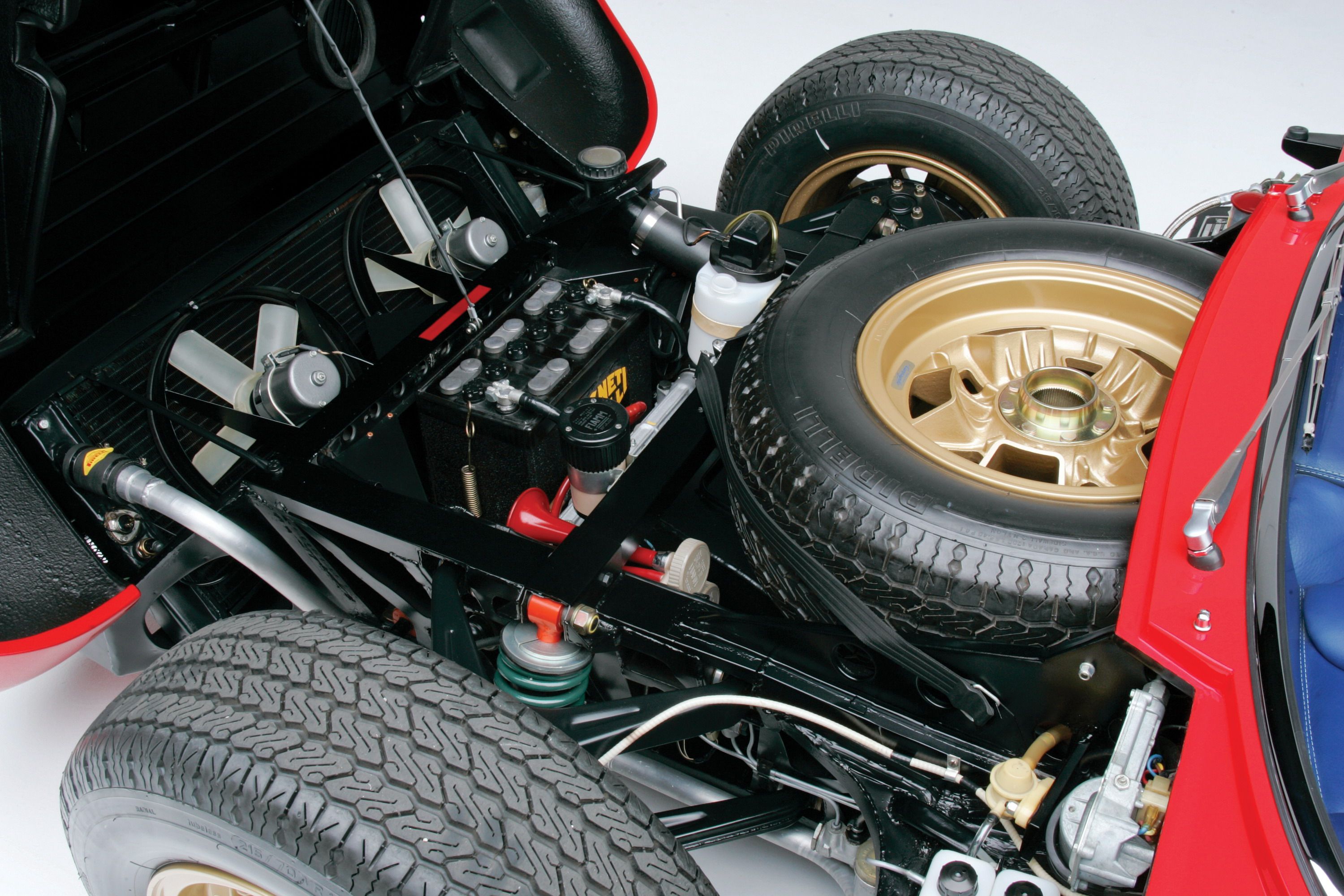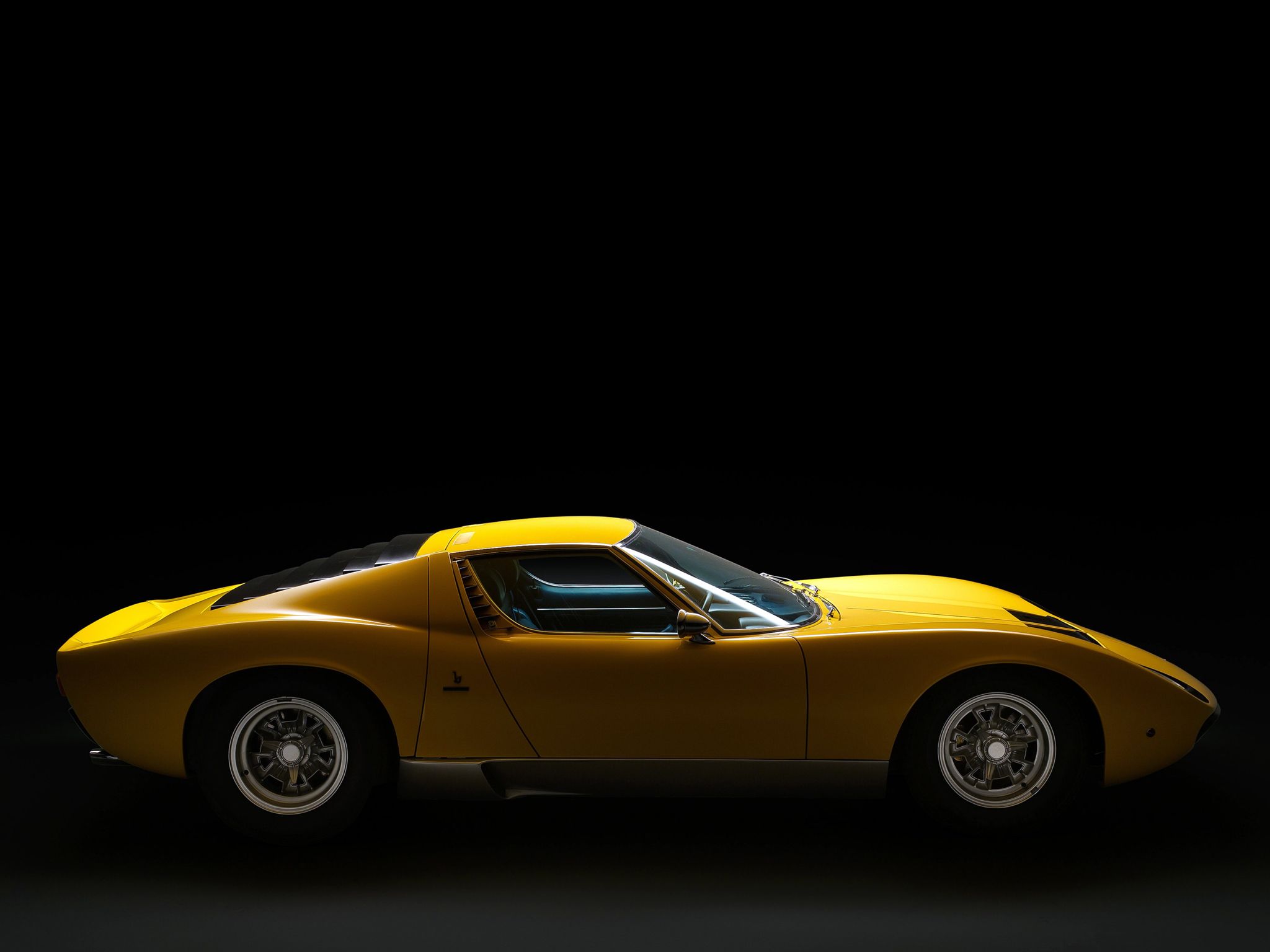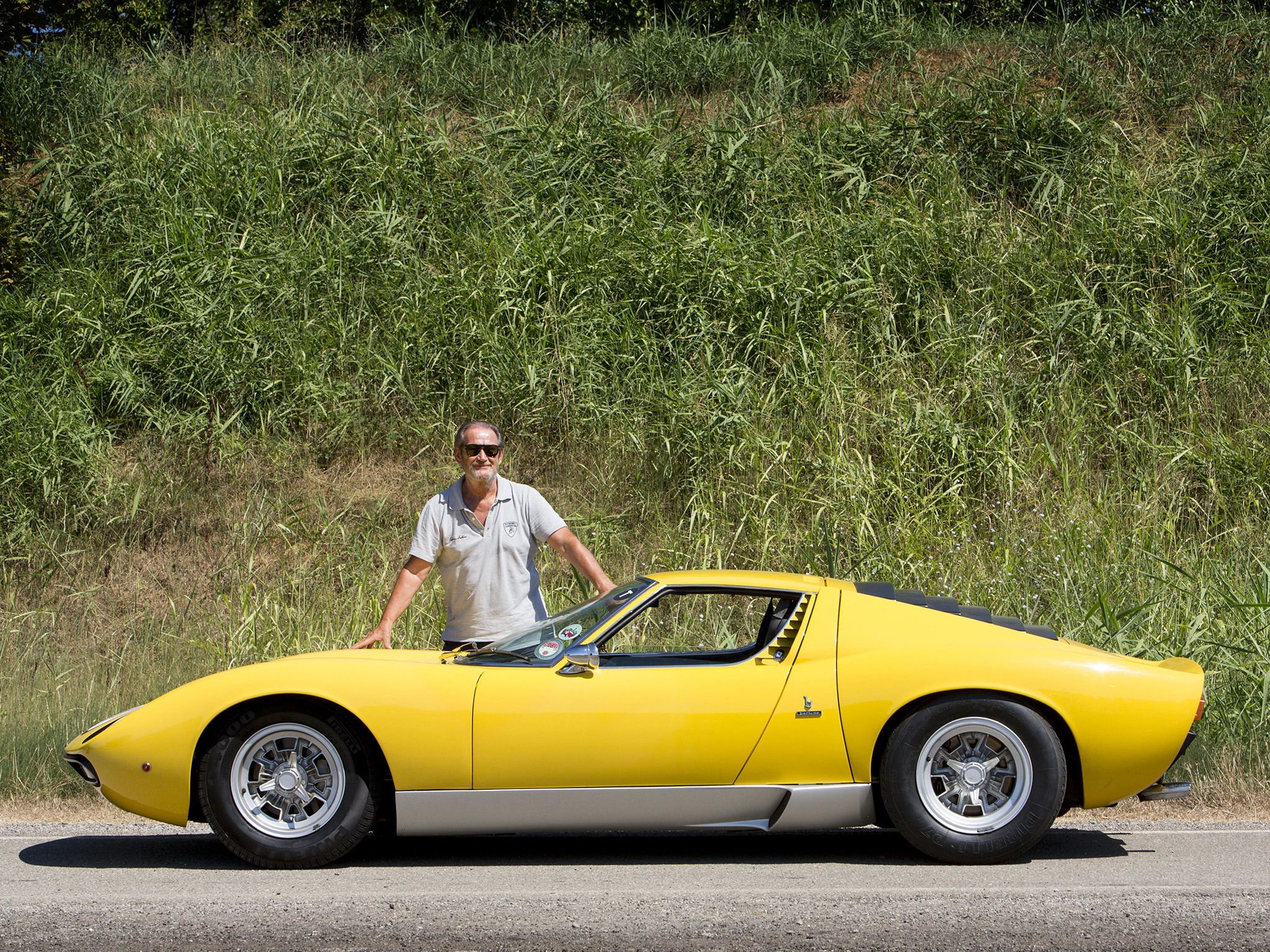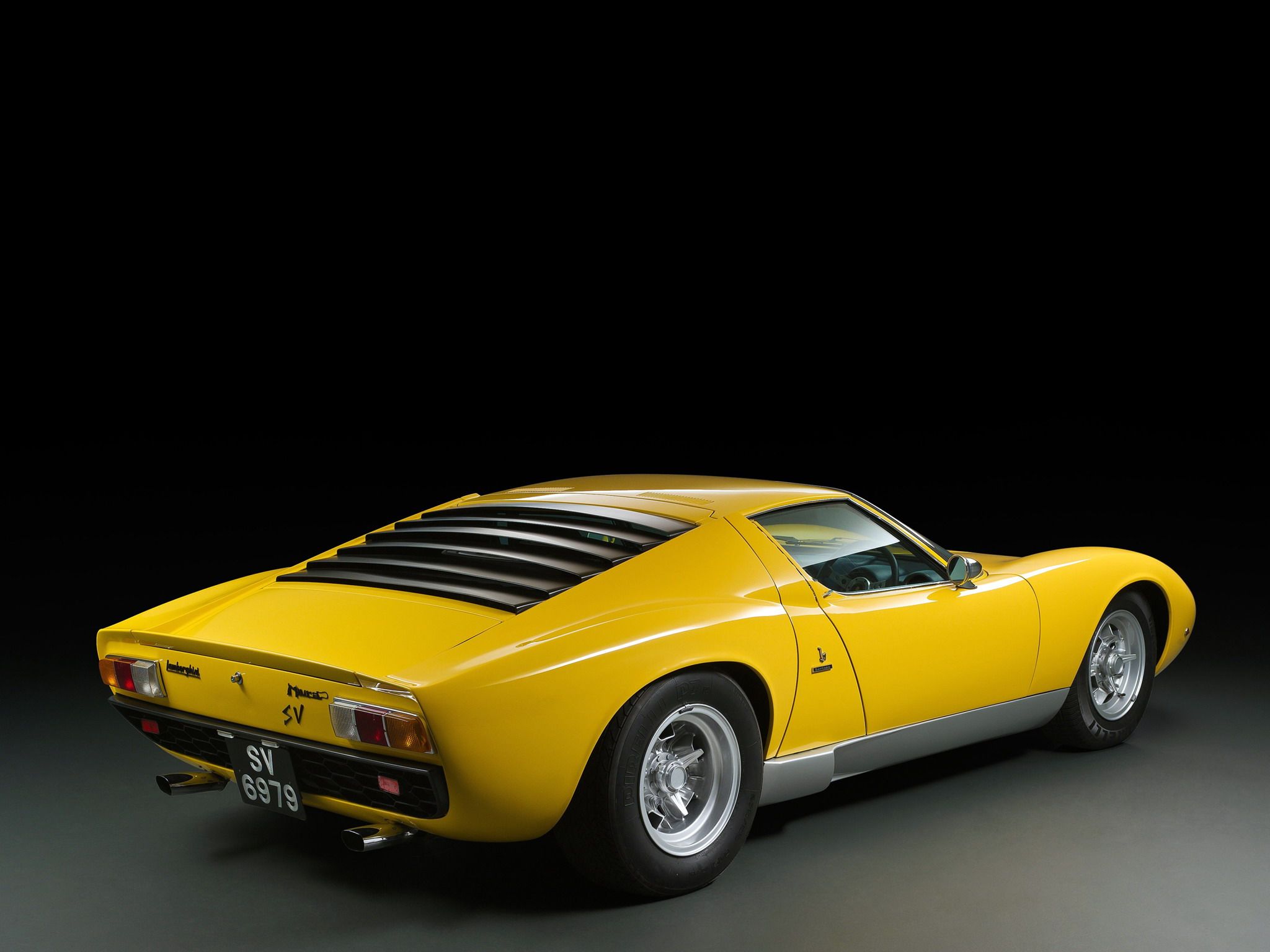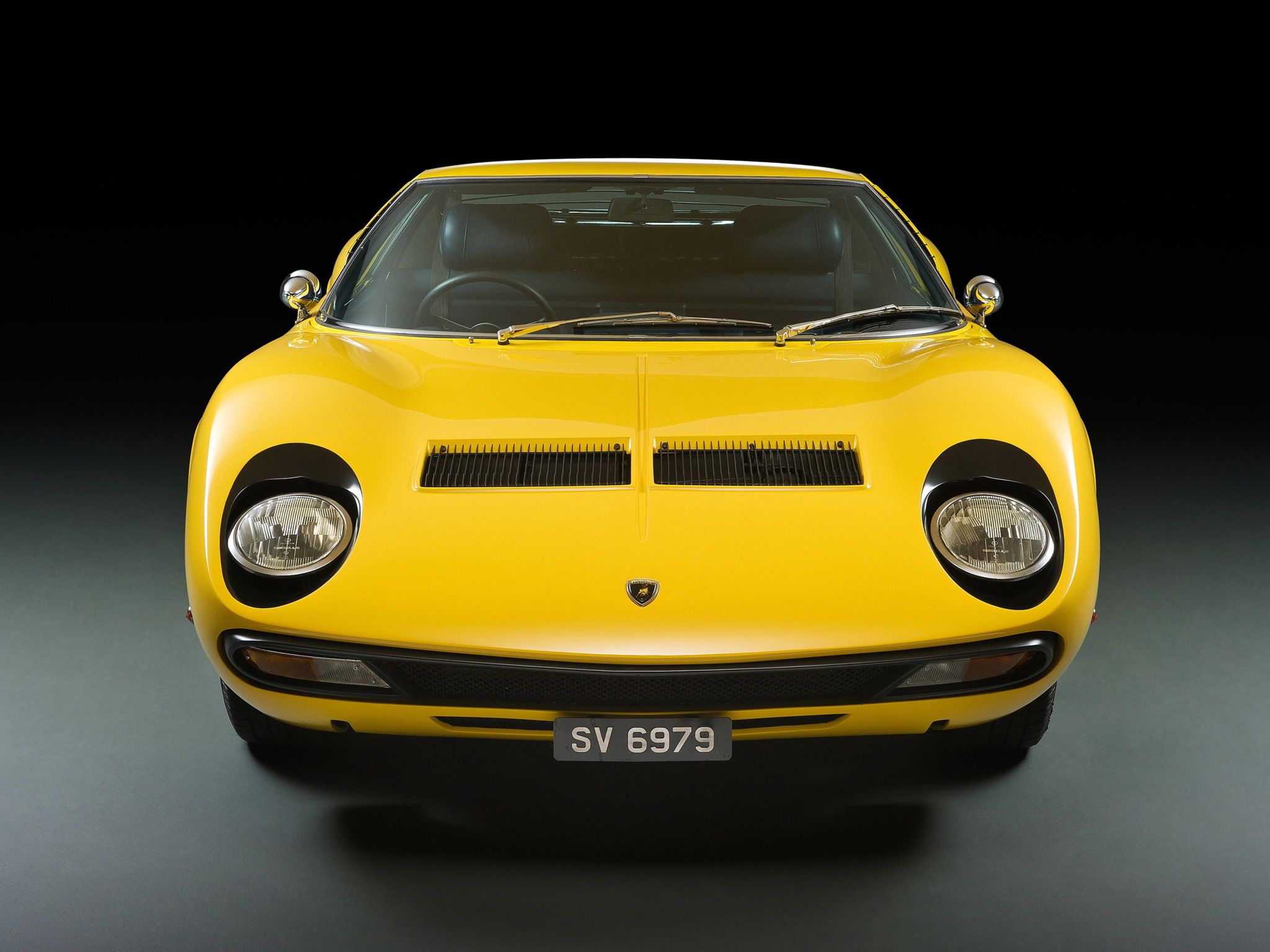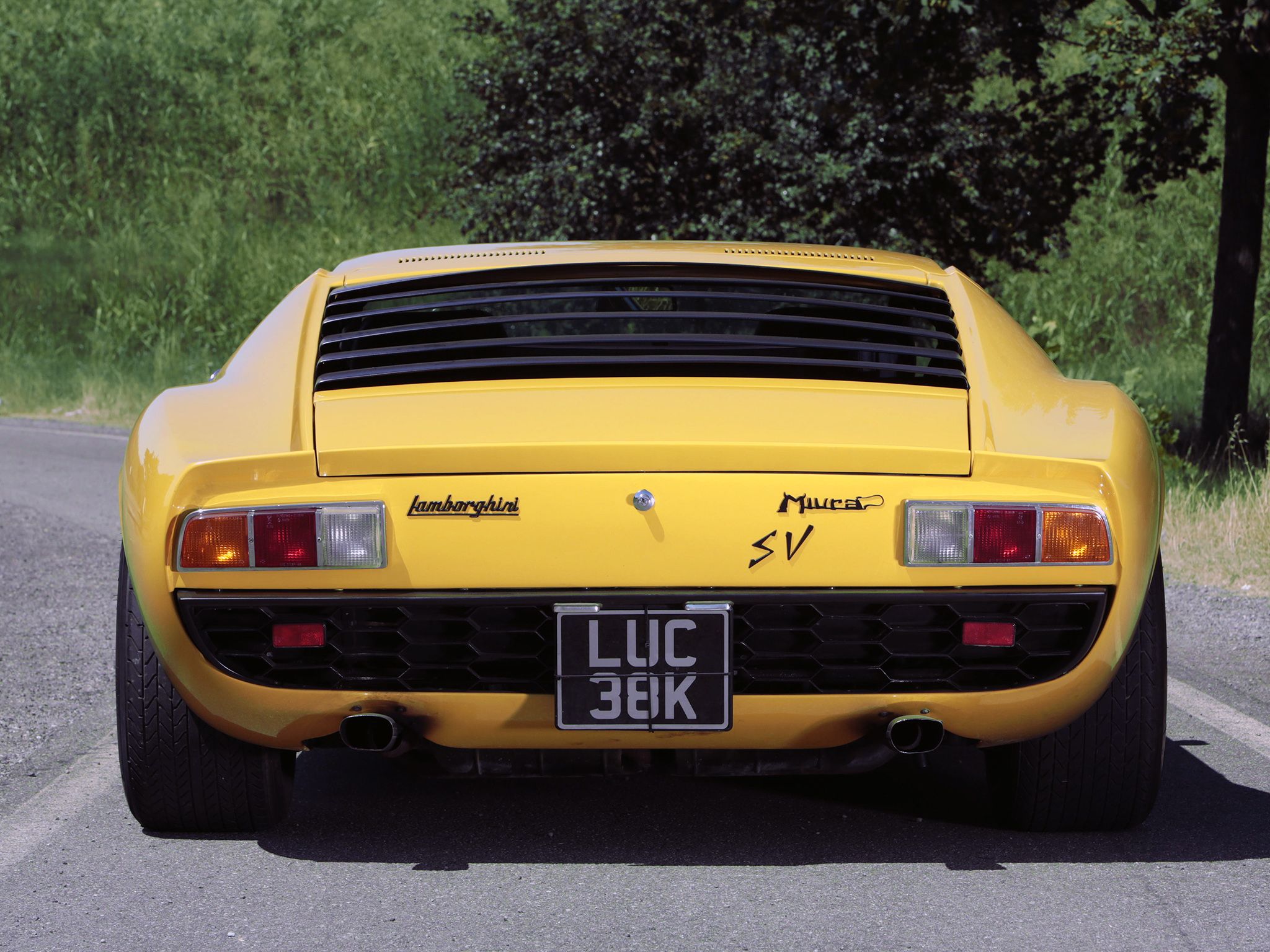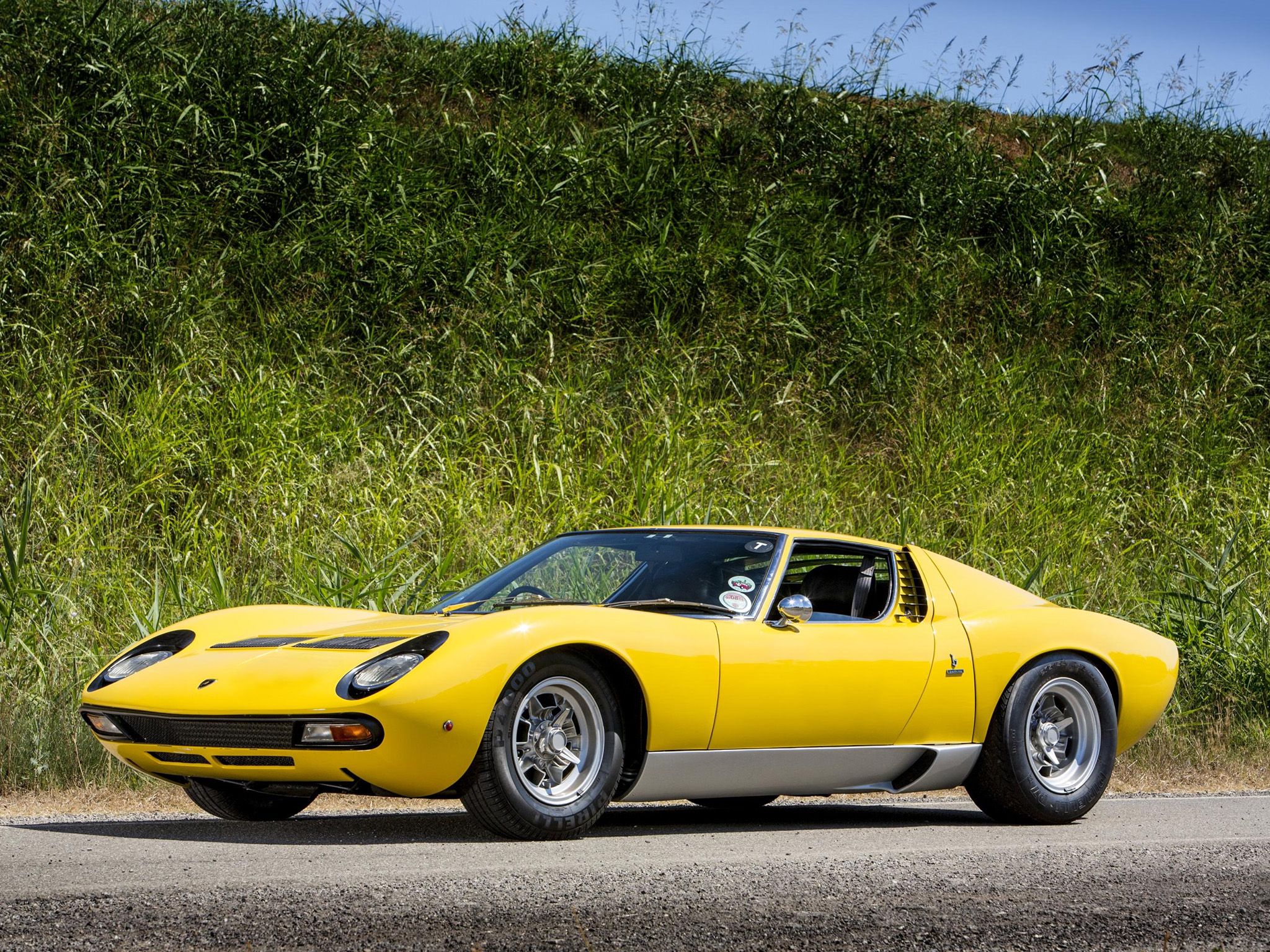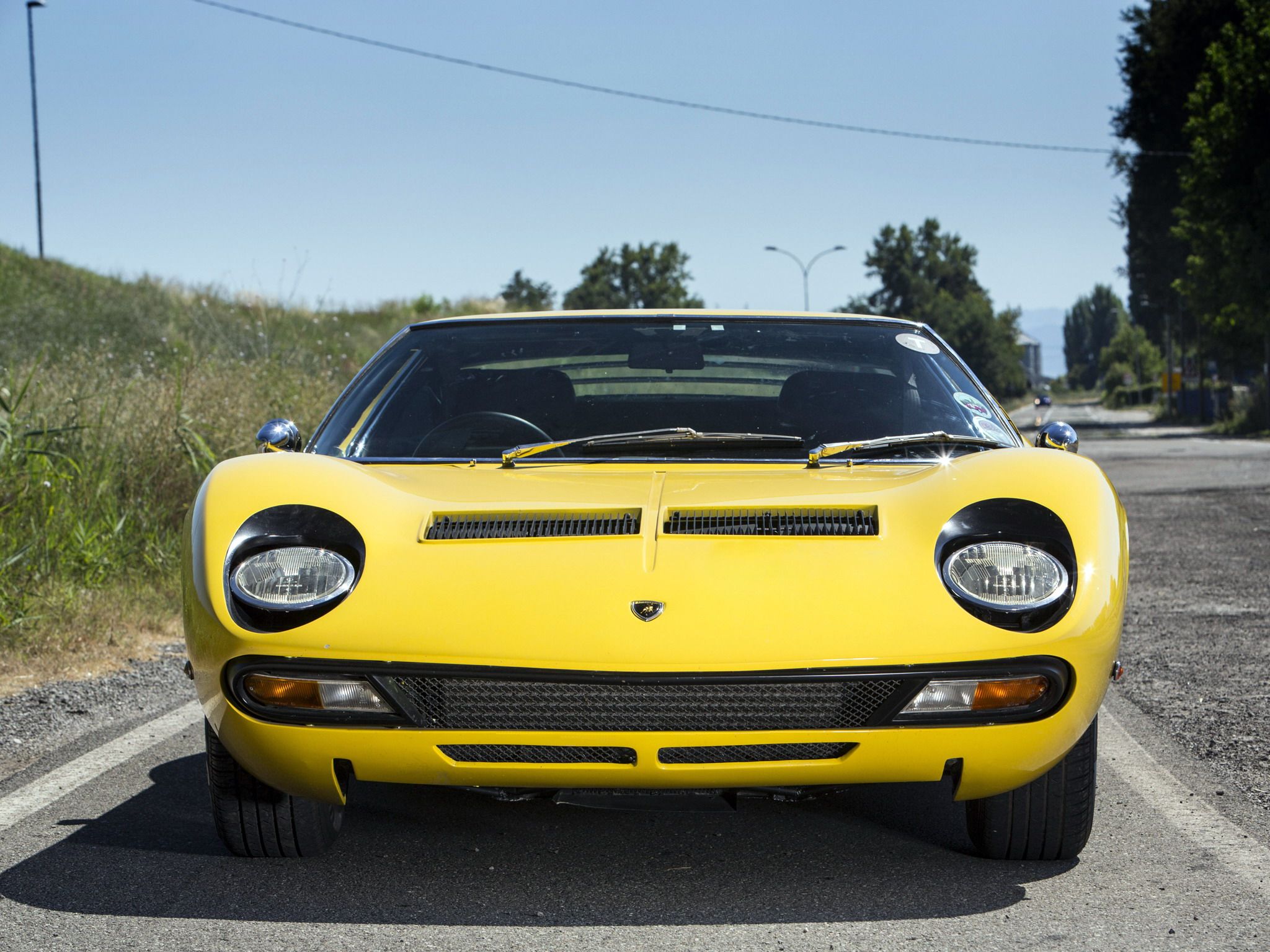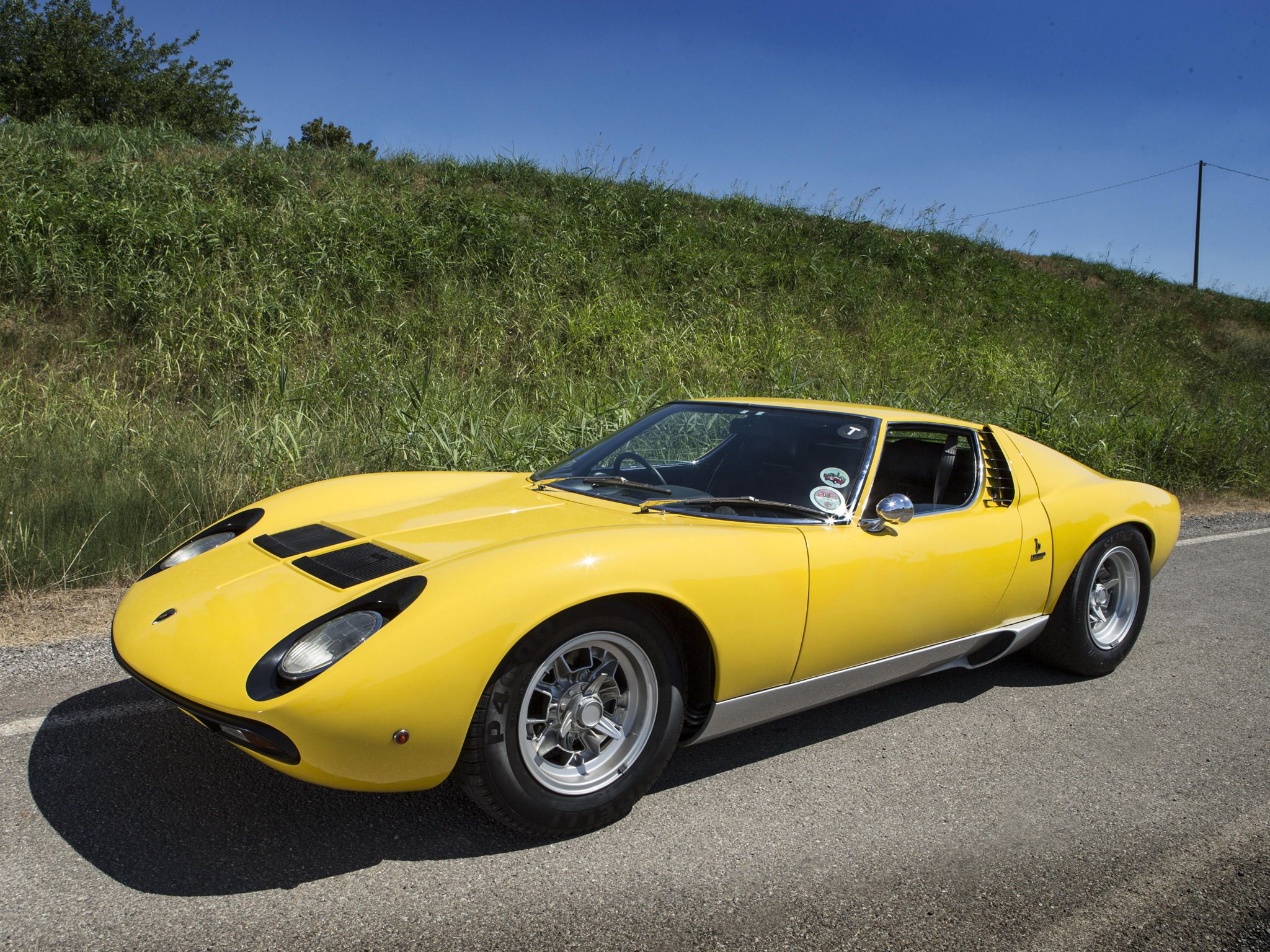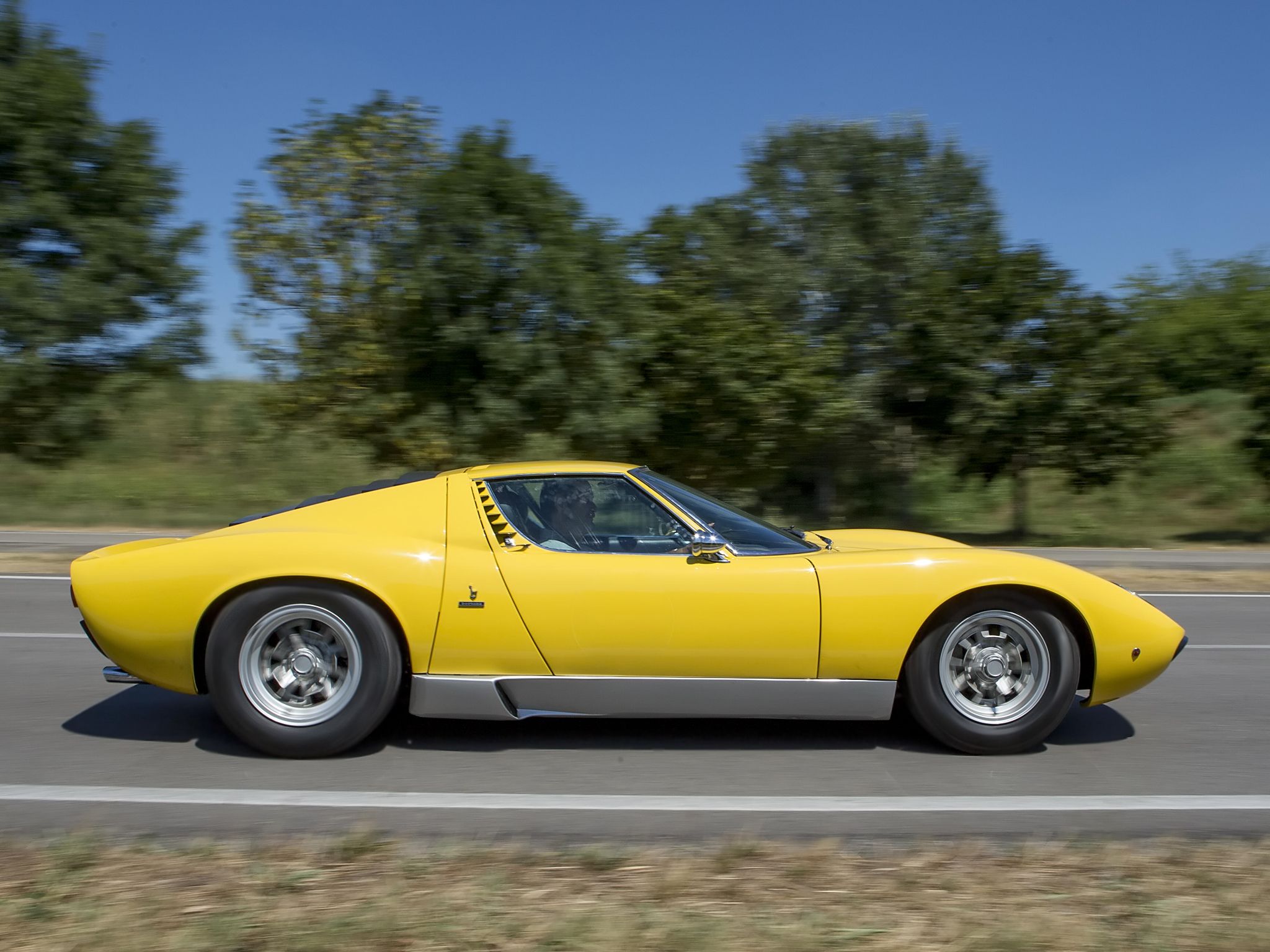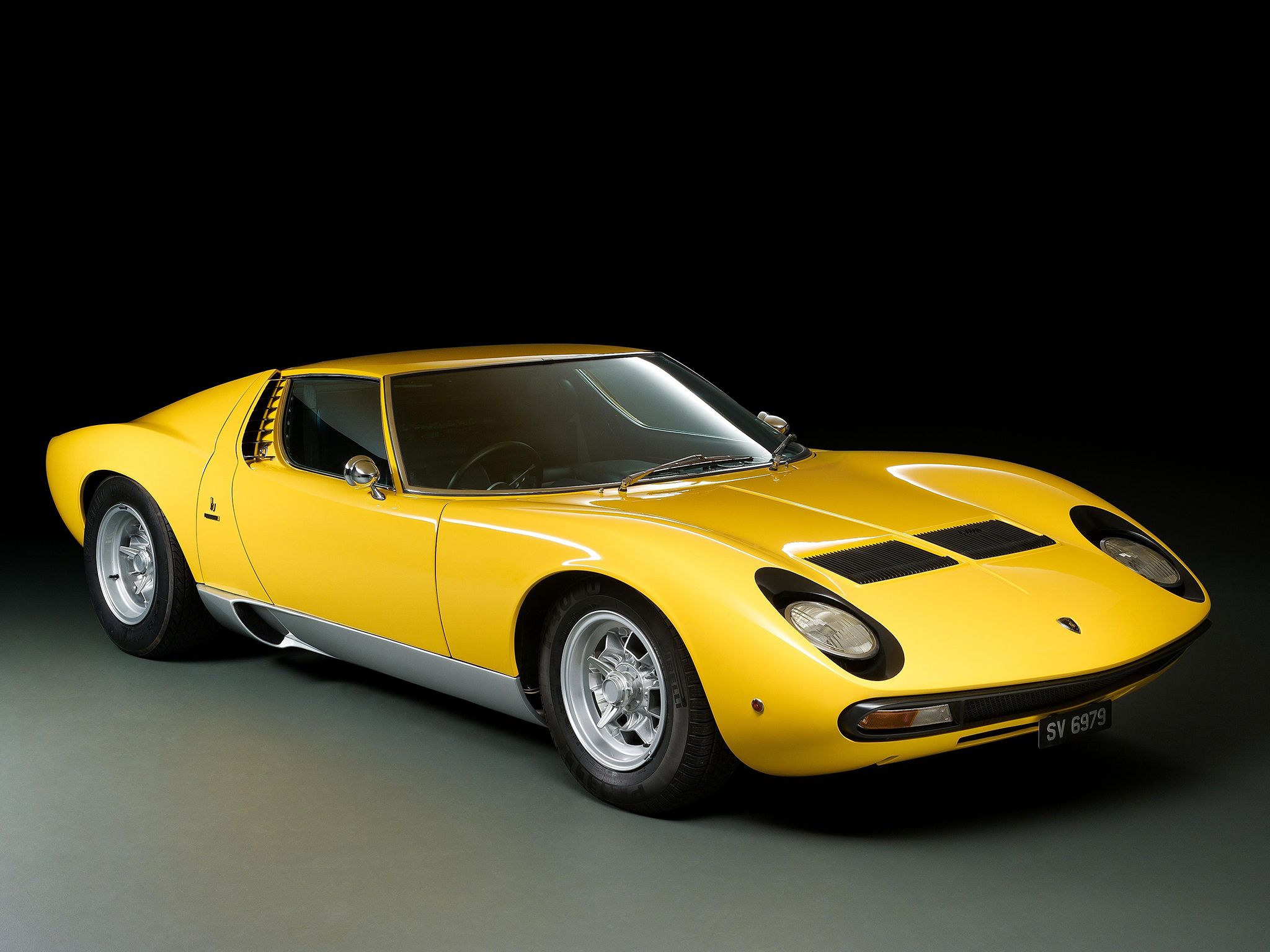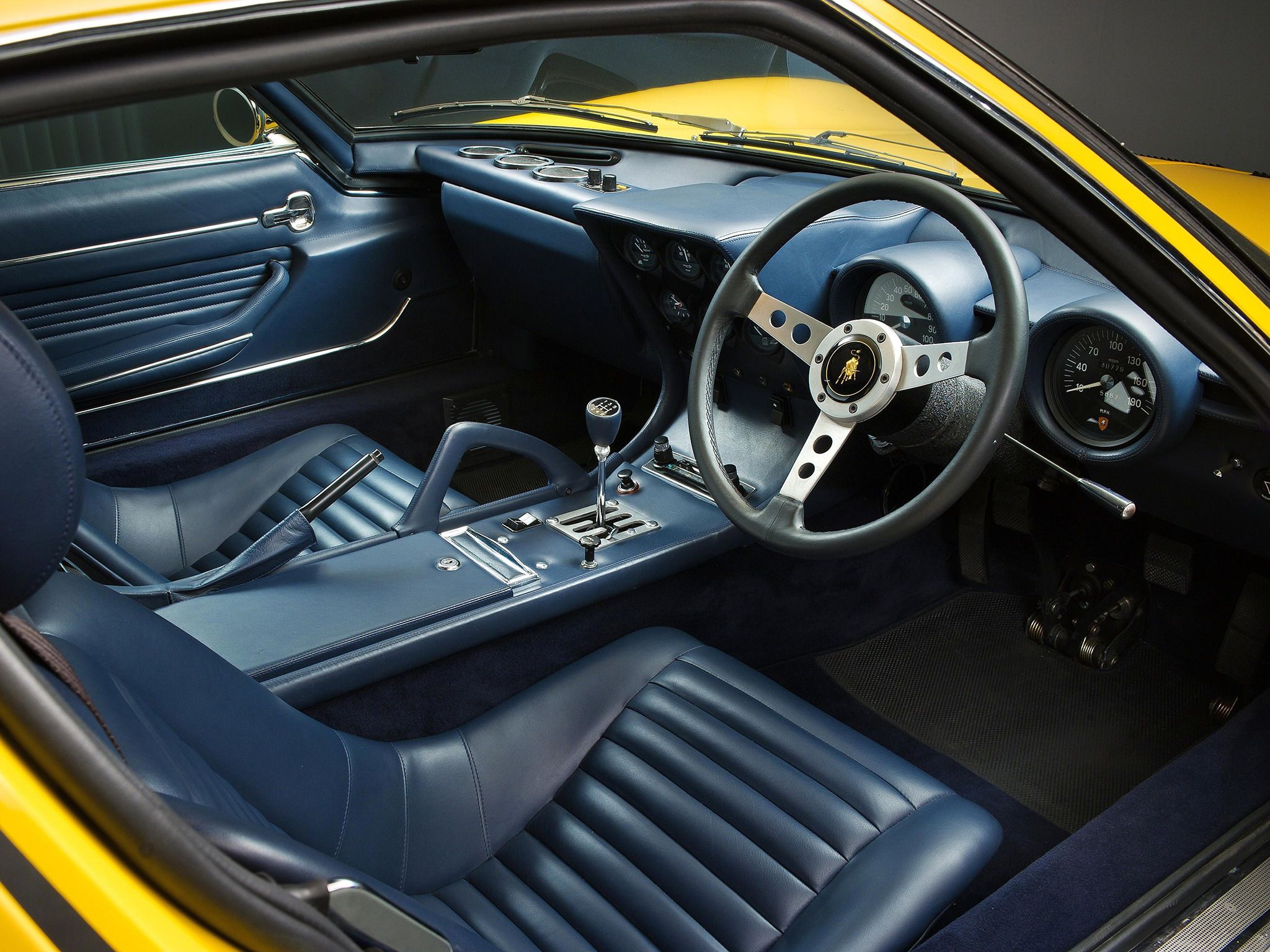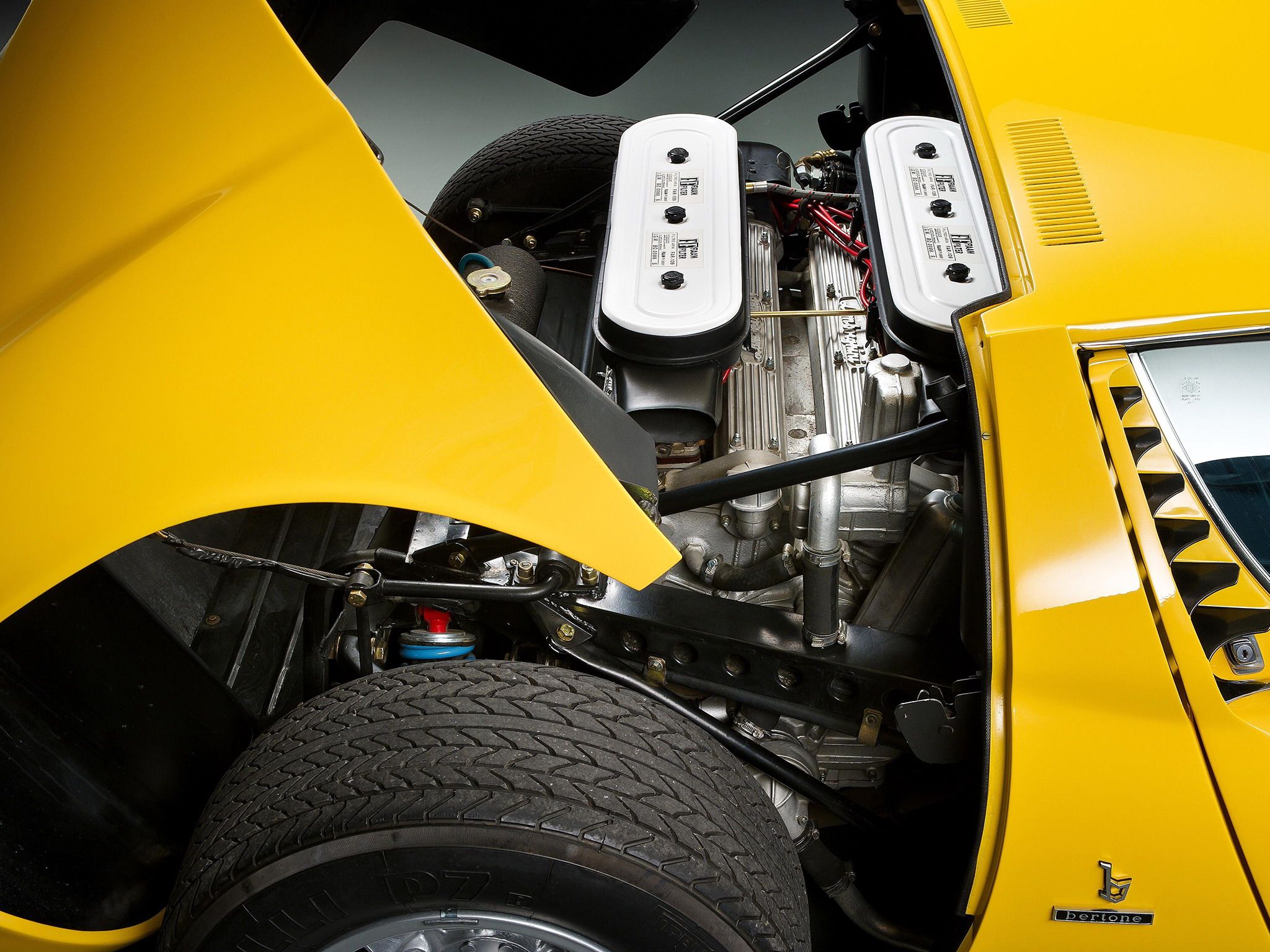The Lamborghini Miura SV, also known as the P400SV, was introduced in 1971. Essentially an updated Miura S, the SV was the last and most famous Miura.->ke378 Produced in significantly smaller numbers than the previous versions, the SV is also the rarest Miura as well. Although visual updates were mostly subtle, the Miura SV featured extensive drivetrain and chassis upgrades that enhanced both the output and the handling of the car.
The oil crisis and the lack of demand prompted Lamborghini->ke44 to halt Miura production in 1973, the same year it launched the Urraco, its first of only two sports cars->ke506 powered by V-8 engines. The Miura was replaced by the Countach->ke387 in 1974, a vehicle the company had been working on since 1970.
Shortly before the Miura was discontinued, Ferruccio sold off his controlling shares of the Lamborghini company. Word has it he retired because he achieved everything he had set out to do with the Miura.
Updated 08/24/2016: A very cool Lamborghini Miura P400 SV by Bertone was brought by RM Sotheby's at the 2016 Monterey Car Week, where unfortunately it failed to sell. The car was estimated to go down for $1,900,000 - $2,200,000. Check the "Pictures" tab for some images taken at the event.
Continue reading to learn more about the Lamborghini Miura SV.
1971 - 1972 Lamborghini Miura SV
- Make: Array
- Model: 1971 - 1972 Lamborghini Miura SV
- Engine/Motor: V12
- Horsepower: 385 @ 7850
- Torque: 295 @ 5750
- [do not use] Vehicle Model: Array
Exterior
The most important things Lamborghini changed on the Miura SV on the outside were the rear fenders, which were significantly wider than the Miura S'. Bertone's Marcello Gandini had to redesign the rear bodywork to accommodate the new rear suspension with longer wishbones, which added 1.5 inches of length.
The modification also allowed Lamborghini to add wider tires at the rear. The wheels were also new; magnesium rims wrapped in Pirelli Cinturato rubber.
Wider fenders and new wheels aside, the SV's rear fascia also received a pair of taillights sourced from the Fiat->ke30 Dino Spyder, which had three distinct clusters, including reverse lights, all separated by chrome surrounds. The previous lamps were smaller and split horizontally.
The front end received better integrated fog lamps and turn signals and a slightly reshaped bumper grille. The SV was also recognizable for the lack of "eyelashes" around the headlamps.
Exterior Dimensions
|
Wheelbase |
2,505 MM (98.6 Inches) |
|
Length |
4,390 MM (172.8 Inches) |
|
Width |
1780 MM (70.1 Inches) |
|
Height |
1100 MM (43.3 Inches) |
Interior
The interior of the Miura S, with its locking glovebox lid, single release handles for front and rear body sections and power windows, carried over unchanged into the Miura SV.
There were two important updates, however: real leather for the seats (replacing the leather-looking vinyl in the previous models) and a Borletti air conditioning system, an option for European cars and standard for vehicles sold in the United States. Only 30 vehicles -- 15 percent of total SV production -- received this feature.
Despite the lack of updates, the SV's interior was among the sportier and more luxurious of the early 1970s. Although not as spartan and motorsport-based->ke447 as Ferrari ->ke252cabins of the era, the Miura's did come with various racy bits, such as the big center stack with six gauges, the "floating" rev counter and speedo, the bucket seats, and the drilled spokes of the steering wheel.
The lowered seating position also gave the Miura's cockpit a race-like feeling. On the other hand, the soft carpet covering the floor and the center console, as well as the leather adorning the door panels, set the Miura SV apart from other sports cars->ke506 of the era.
Drivetrain
The Miura SV made use of the same 4.0-liter V-12 engine introduced in 1966, but the unit now featured different cam timing and new carburetors. Later on, Miura SV engines included a limited-slip differential, which required a split sump.
The five-speed manual gearbox now had its own lubrication system, which allowed the use of the appropriate types of oil for both the gearbox and the engine, enhancing the car's reliability and eliminating some concerns that metal shavings from the gearbox could travel into and damage the engine.
The updated engine generated 380 horsepower and 295 pound-feet of torque, according to Lamborghini, a 15-horsepower improvement over the Miura S and 35 horses more than the original Miura. The Italians also claimed a top speed of 180 mph, but actual tests revealed the SV's top speed was slower than the Miura S' due to the larger rear tires at around 170 mph.
Still, the SV was quite the performer, and was the fastest production car in the world at launch. Its 0-to-60 mph sprint of 5.7 seconds and quarter-mile time of around 14.3 ticks were among the quickest of the era.
Much like its predecessors, the Miura SV is widely considered as the first production supercar to employ a mid-mounted engine, a trend later adopted by rival Ferrari.
Drivetrain Specifications
|
Engine |
60º V12 |
|
Displacement |
3.929 cc |
|
Bore x Stroke |
82.0x62.0 MM/ 3.23x2.44 Inches |
|
Compression |
10.7:1 |
|
Output |
380 HP @ 7,850 R PM |
|
Torque |
295.0 LB-FT @ 5,750 RPM |
|
Top Speed |
170 MPH |
|
0 - 60 mph |
5.75 seconds |
Prices
At launch, the Miura SV had a sticker of $13,000, which made it one of the most expensive cars on sale in 1971. In today's dollars, it would cost nearly $110,000, or as much as a range-topping Dodge Viper->ke1404 or a Porsche 911 Carrera 4S.
Only 150 units of the Miura SV were built between 1971 and 1973, significantly fewer than the Miura (275 units) and the Miura S (338 units). The low production numbers and the improved performance made the SV the second-most sought-after Miura after the SV/J, a special spec model built in only six examples.
Nowadays, Miura SVs can easily fetch more than $800,000 at auction, with mint-condition models changing owners for at least $2 million. In 2014, a beautifully restored Miura SV was sold for $2,090,000 at an RM Auctions event in Monterey, California.
Competition
Maserati Ghibli
Finding a proper competitor for the Miura is next to impossible given it was the car that started the mid-engined supercar craze, but there are a few front-engined vehicles that gave Lambo's finest effort a run for its money. One of them is the Maserati Ghibli,->ke4598 a grand tourer introduced in 1967 and produced until 1973.
Although it had its engine under a long hood in front of the windshield, the Ghibli was also a stunning presence on the road. Designed by Giorgetto Giugiaro himself while working for Ghia, the Ghibli was characterized by a low, shark-shaped nose, a sleek roof, and pop-up headlamps. Built as a grand tourer that could seat four, the Ghibli had a more upscale interior than the Miura, with leather seats, better fit and finish, a wood-rimmed steering wheel, and more soft-touch surfaces.
Under the hood, the Ghibli initially came with a 4.7-liter V-8 rated at 310 horsepower. The quad-cam, dry sump mill mated to either a five-speed manual or a three-speed automatic. A more powerful Ghibli SS model was released with a 4.9-liter V-8 and 330 horsepower. This model needed 6.8 seconds to hit 60 mph and had a top speed of 155 mph. Unlike the Miura, the Ghibli was also offered as a convertible.
Although discontinued in 1973, the Ghibli returned in 1992 as a two-door coupe based on the Maserati Biturbo. In 2014, the Italians revived the nameplate once again for a compact, four-door sedan.
Read more about the Maserati Ghibli here.
Ferrari Daytona
Launched less than five years after Enzo Ferrari allegedly told Ferruccio Lamborghini to focus on his tractors and stop complaining about Ferraris, the Miura arrived as a big blow for Maranello. Two years later, Ferrari introduced the 365 GTB/4, unofficially known as "Daytona" after Ferrari's 1-2-3 finish at the 1967 24 Hours of Daytona with the 330 P3/4. Although the Daytona wasn't developed to specifically compete against the Miura, but rather as a successor to the 275 GTB/4, it was widely regarded as Ferrari's main weapon against Lambo's supercar.
The Daytona was very similar to the Ghibli, employing the same 2+2 seating configuration and a front-mounted engine. Designed by Pininfarinta, the Daytona also featured a long hood and a raked roofline. Early Daytonas featured fixed headlights behind an acrylic glass cover, but pop-up headlamps were added in 1971 due to new safety regulations in the U.S.. Its interior rivaled the Ghibli's in terms of luxury, and sported racing seats, a thin dash with horizontally positioned gauges, leather surfaces and a wooden center console.
Motivation was provided by a 4.4-liter V-12 featuring six Weber twin carburetors and a five-speed manual transmission. The engine cranked out 352 horsepower, enabling the Daytona to hit 60 mph in just 5.4 seconds and a top speed of 174 mph.
Unlike both the Miura and the Ghibli, the Daytona was also a successful race car,->ke148 obtaining GT class wins in the 1972, 1973 and 1974 24 Hours of Le Mans. In 1979, a car built in 1973 achieved a class victory (and 2nd overall) in the 24 Hours of Daytona.
Find out more about the Ferrari Daytona here.
Conclusion
While most enthusiasts will agree that all classic Lamborghinis are special, the Miura holds a special place in automotive history due to the fact that it was the first-ever production car to sport a two-seat, mid-engine configuration. Without the Miura, the supercar craze would've probably started later than it did. It's not exactly the best comparison, but think of the Miura as the Dodge Caravan.->ke2783 Its configuration was revolutionary, but unlike the Caravan, its styling was -- and still is -- downright gorgeous. The Miura is included in just about any Top 10 most beautiful cars ever built (except this one), and that says a lot about its impact on the automotive industry.
Update History
Updated 07/07/2016: As a celebration of Miura's 50th anniversary, Lamborghini dropped a series of new images of the most powerful version in the lineup: Miura SV. Check them out in the picture gallery and choose a new wallpaper for your desktop!


